Today you’re going to learn how to get backlinks in 2024.
In fact, the 7 strategies I’m going to share with you have helped my site rack up 1.6 million total backlinks:
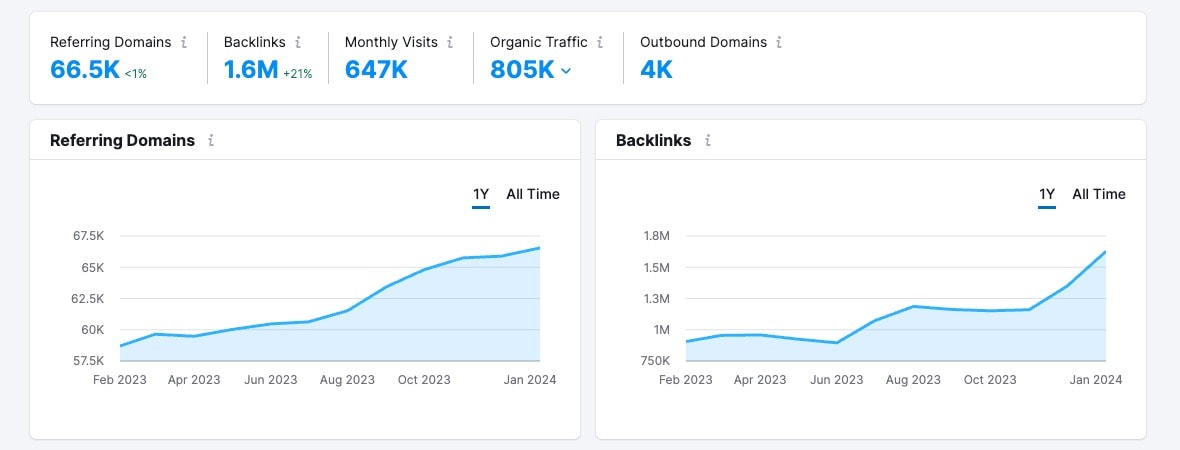
Let’s get right into the techniques.
- 1. Become a Source For Reporters and Bloggers
- 2. Publish “Skyscraper” Content
- 3. Build Links From Outdated Resources
- 4. Use Content Formats Proven To Generate Links
- 5. Publish Ultimate Guides
- 6. Use Branded Strategies and Techniques
- 7. Authority Resource Pages
- Bonus Strategy #1: Turn Brand Mentions Into Quality Backlinks
- Bonus Strategy #2: Send “Feeler” Emails
1. Become a Source For Reporters and Bloggers
Here’s the deal:
If you want to rank on the first page of Google, you need to build backlinks from authority news sites and blogs.
(I’m talking about white hat links from authority news sites and blogs.)
Fortunately, this isn’t as hard as it sounds.
All you need to do is use a free service called Help a Reporter Out (HARO).

HARO is like Tinder for public relations.
It connects people that need sources (bloggers and journalists) to people that want links and exposure (you).
And I’ve personally used HARO to build white hat backlinks from authoritative news sites:

And I’m not alone. In fact, I get emails like this from Backlinko readers all the time:
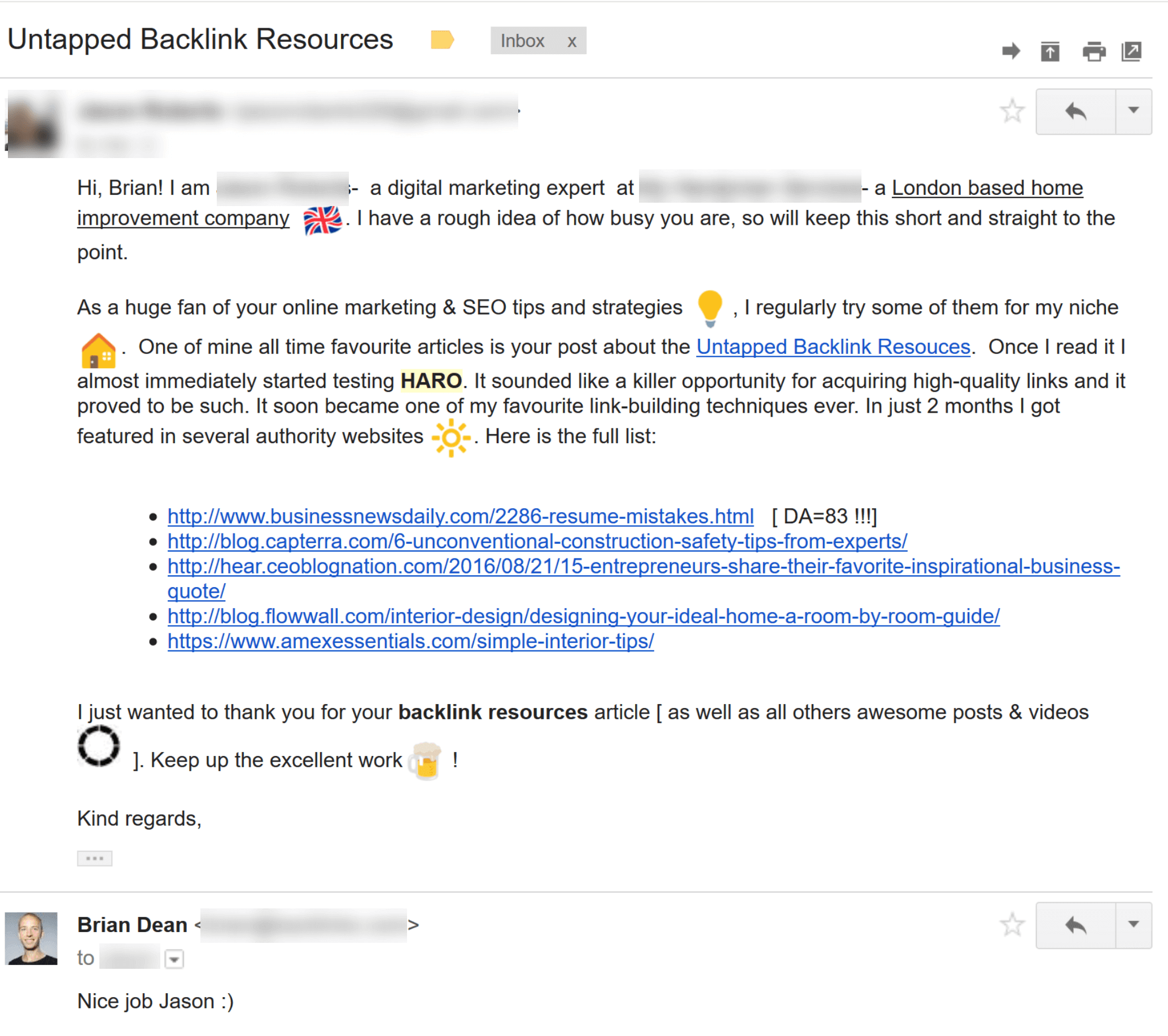
To be clear: this strategy takes work. And it’s not always easy.
But in my experience, it’s one of the best ways to build high-quality backlinks at scale.
With that, let’s dive into the step-by-step process.
First, register as a source.

Next, choose a free or paid plan.
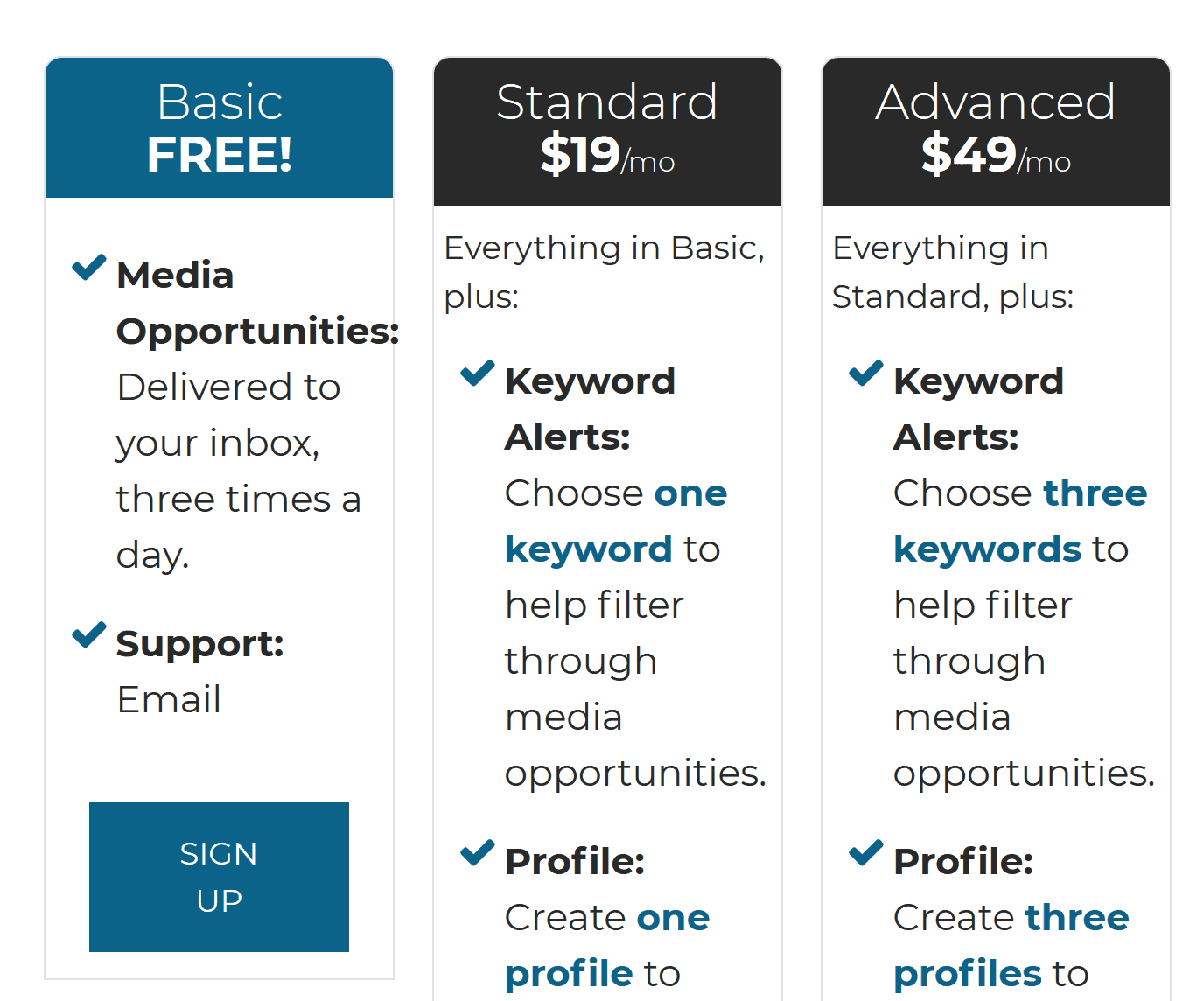
Then, keep an eye out for requests that you can contribute to.
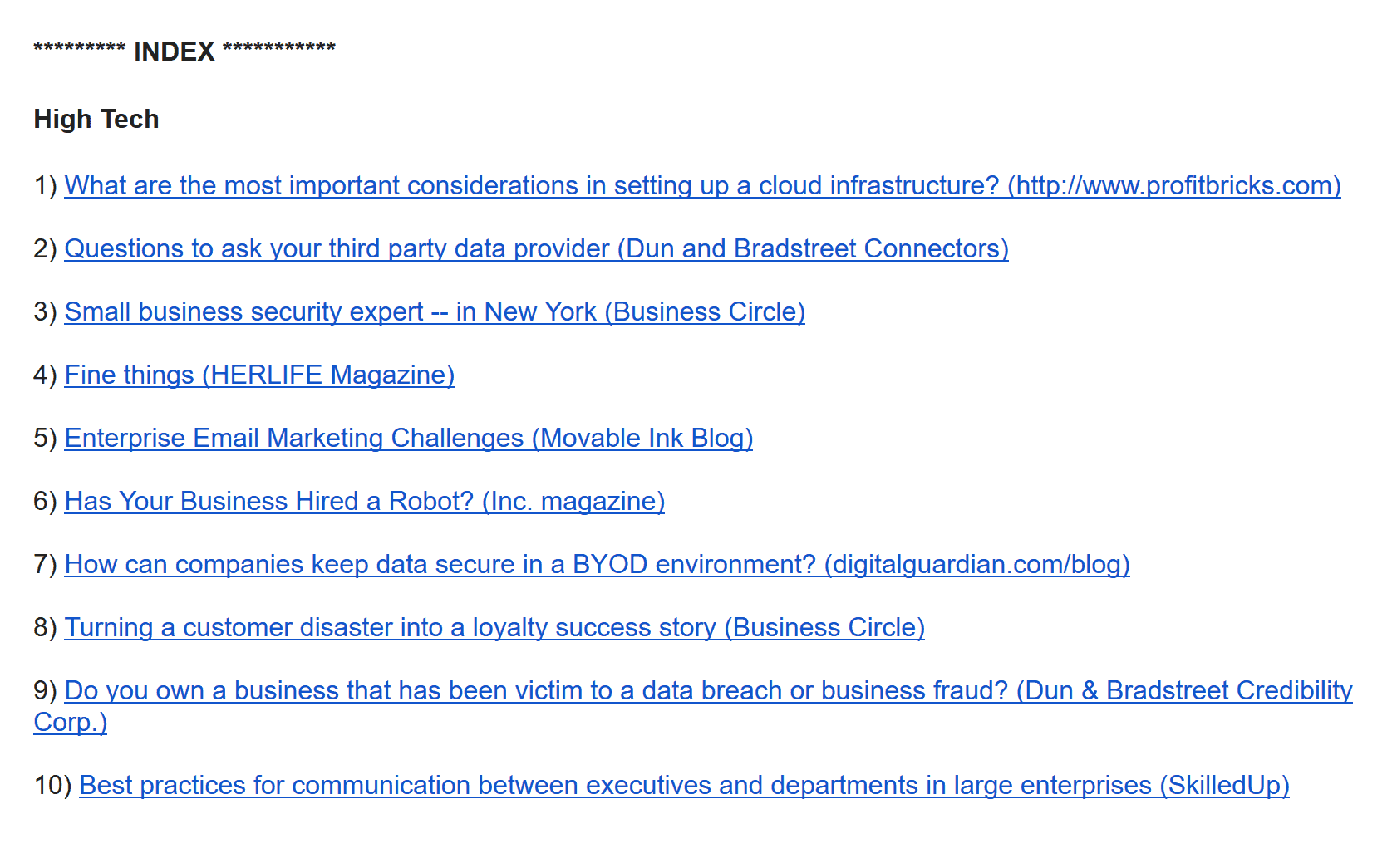
Finally, send the journalist a VERY brief and valuable pitch.
For example:
A while back I saw a request from someone asking: “What’s the difference between graphic design and web design?”.
So I submitted this pitch:

And I got this sweet link from a DR76 university site.
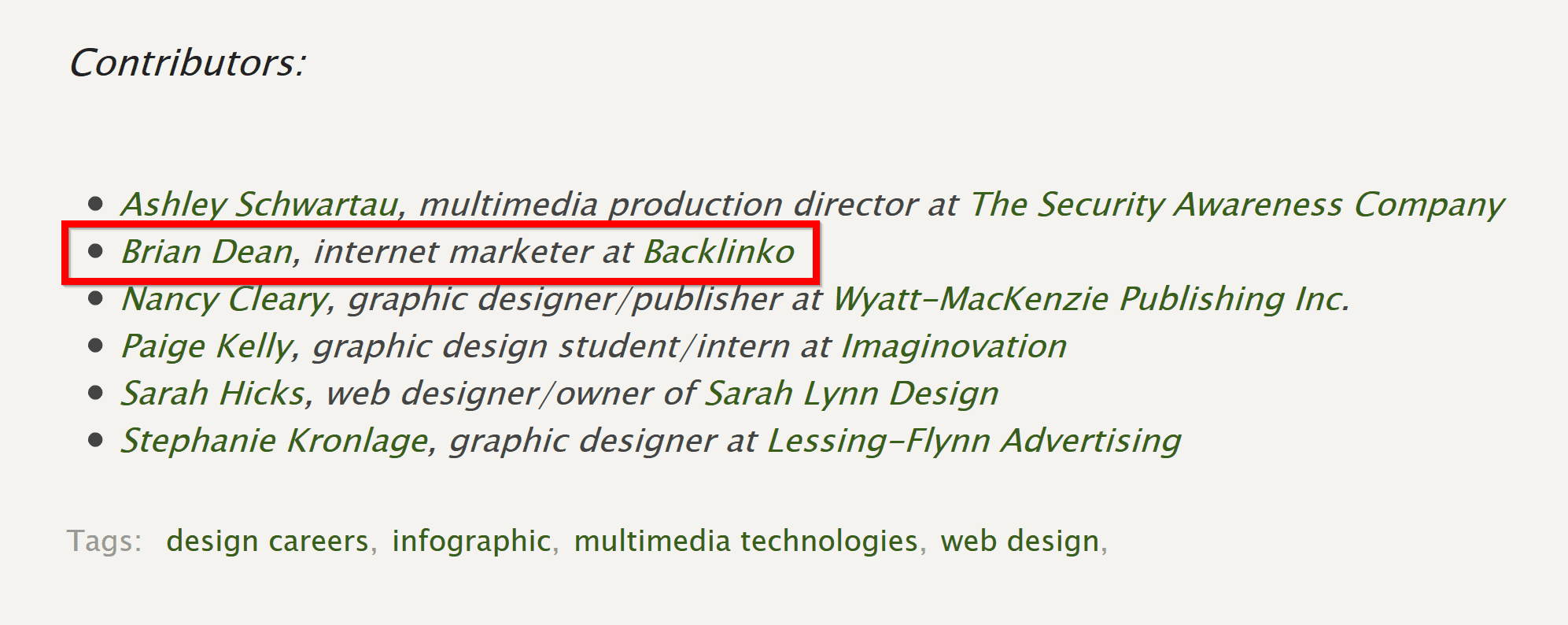
Not too shabby.
2. Publish “Skyscraper” Content
I’ve used “Skyscraper” content to build backlinks from authority sites like Entrepreneur.com:

Hubspot:
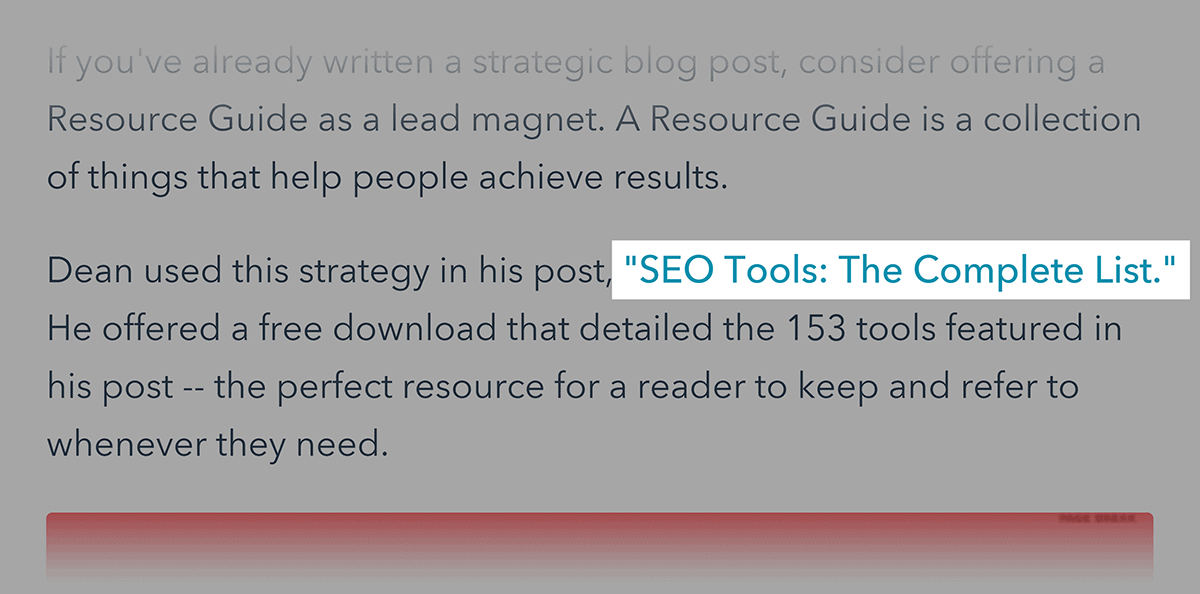
And I even got an editorial link from the GoDaddy blog:

Yup, you’ve probably noticed that they’re all linking to the same piece of content: SEO Tools: The Complete List.
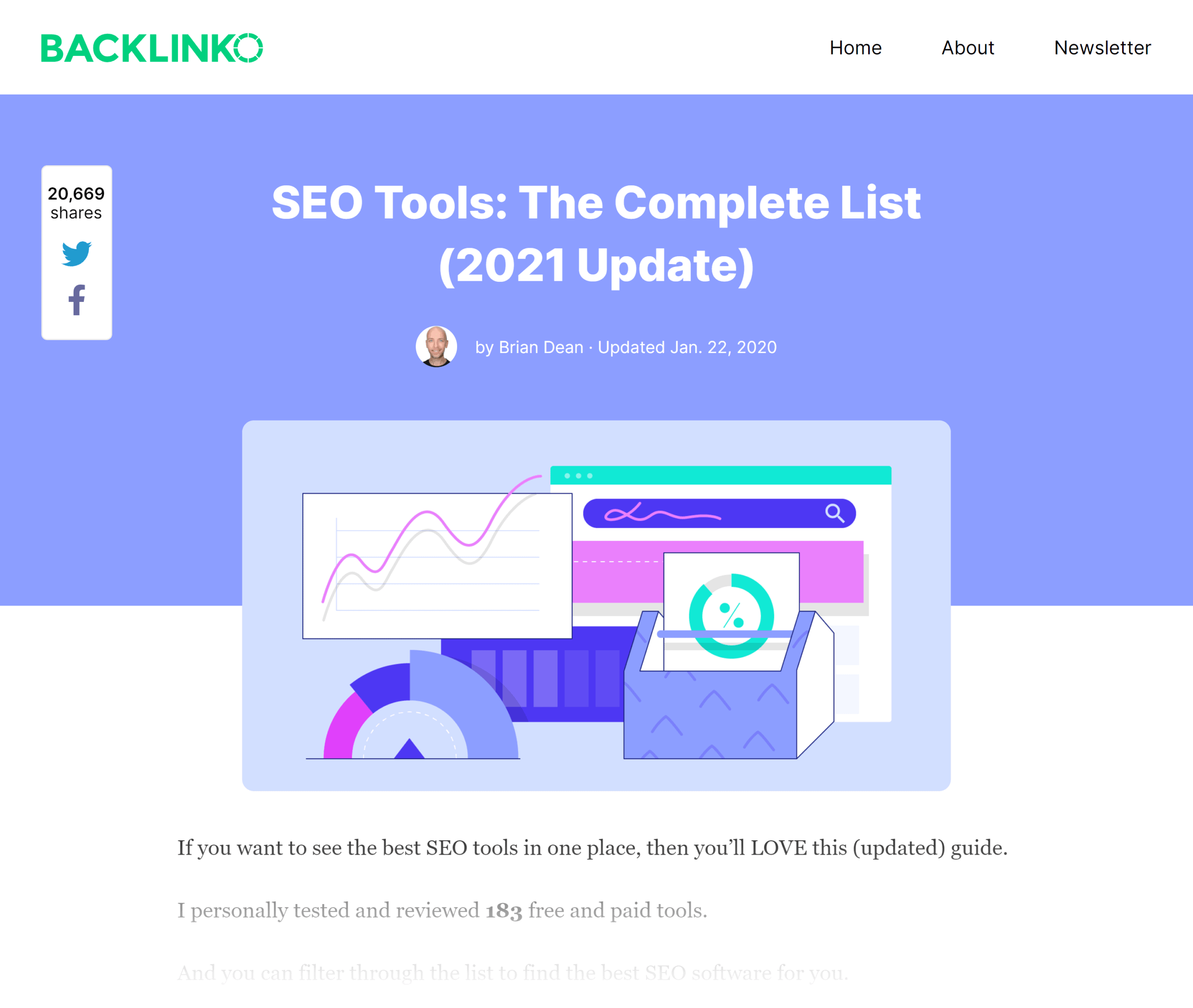
Well, my list of SEO tools is a piece of “Skyscraper” content.
And that page has generated 7.76K total backlinks.

But more important than that, as you just saw, many of those links are quality backlinks from authority sites.
The question is:
How can you do the same thing?
Here’s the step-by-step process:
First, find a piece of content in your industry that’s already performed well (in terms of backlinks).
The easiest way to do that?
A simple Google search.
Just search for your keyword…
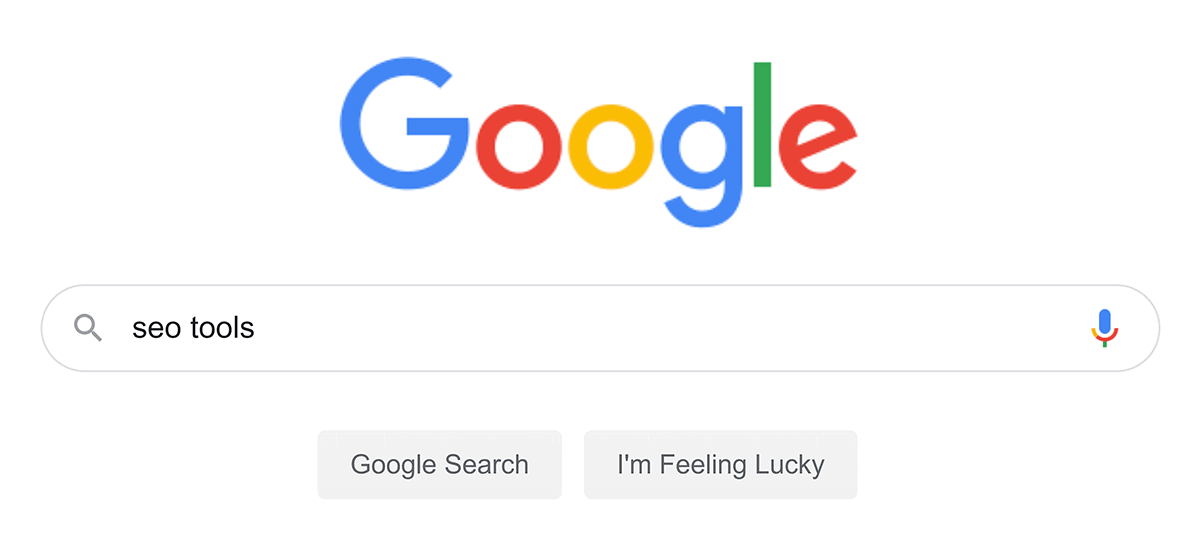
…and check out the first page results:
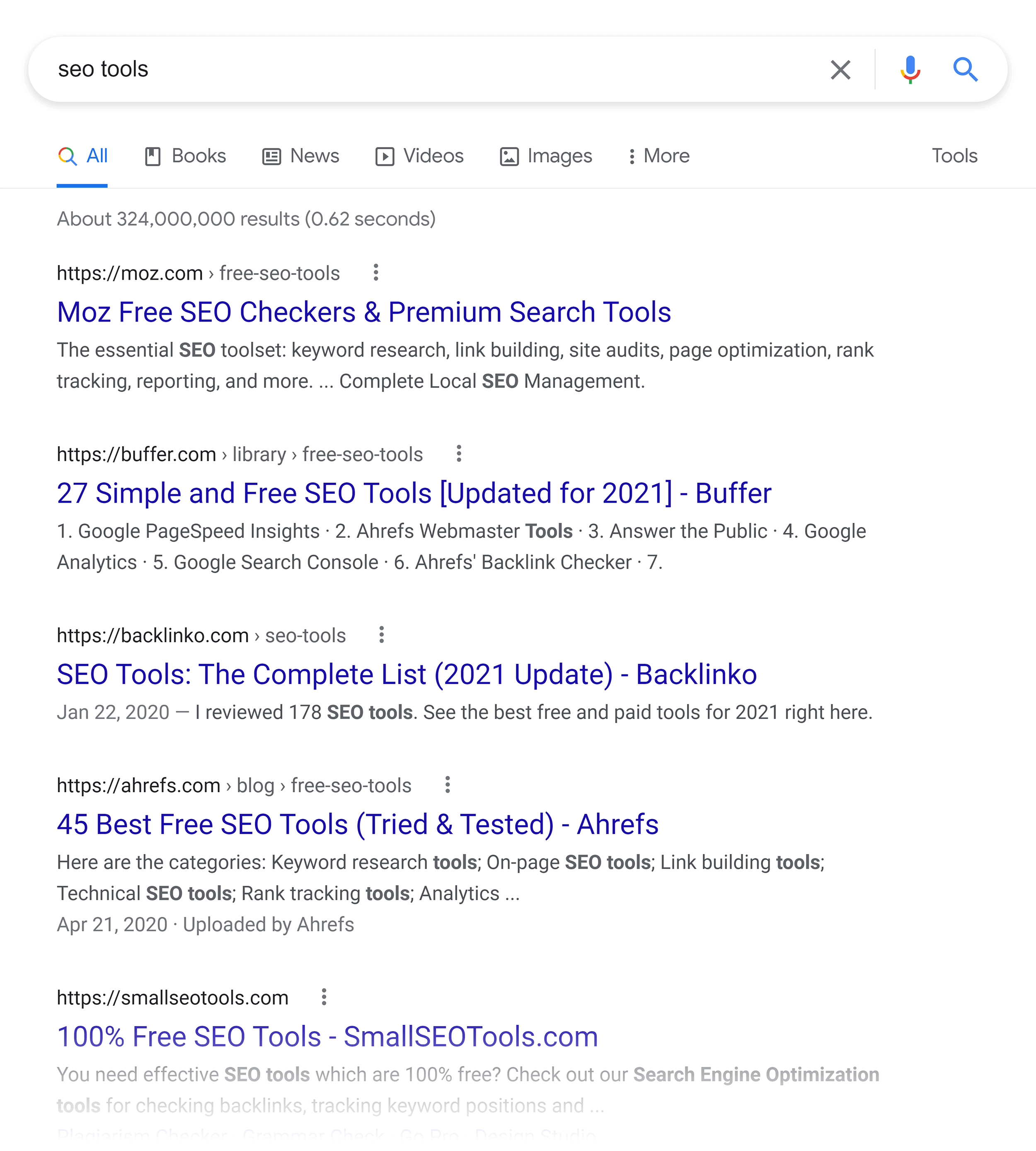
As you know, backlinks are a super important Google ranking signal.
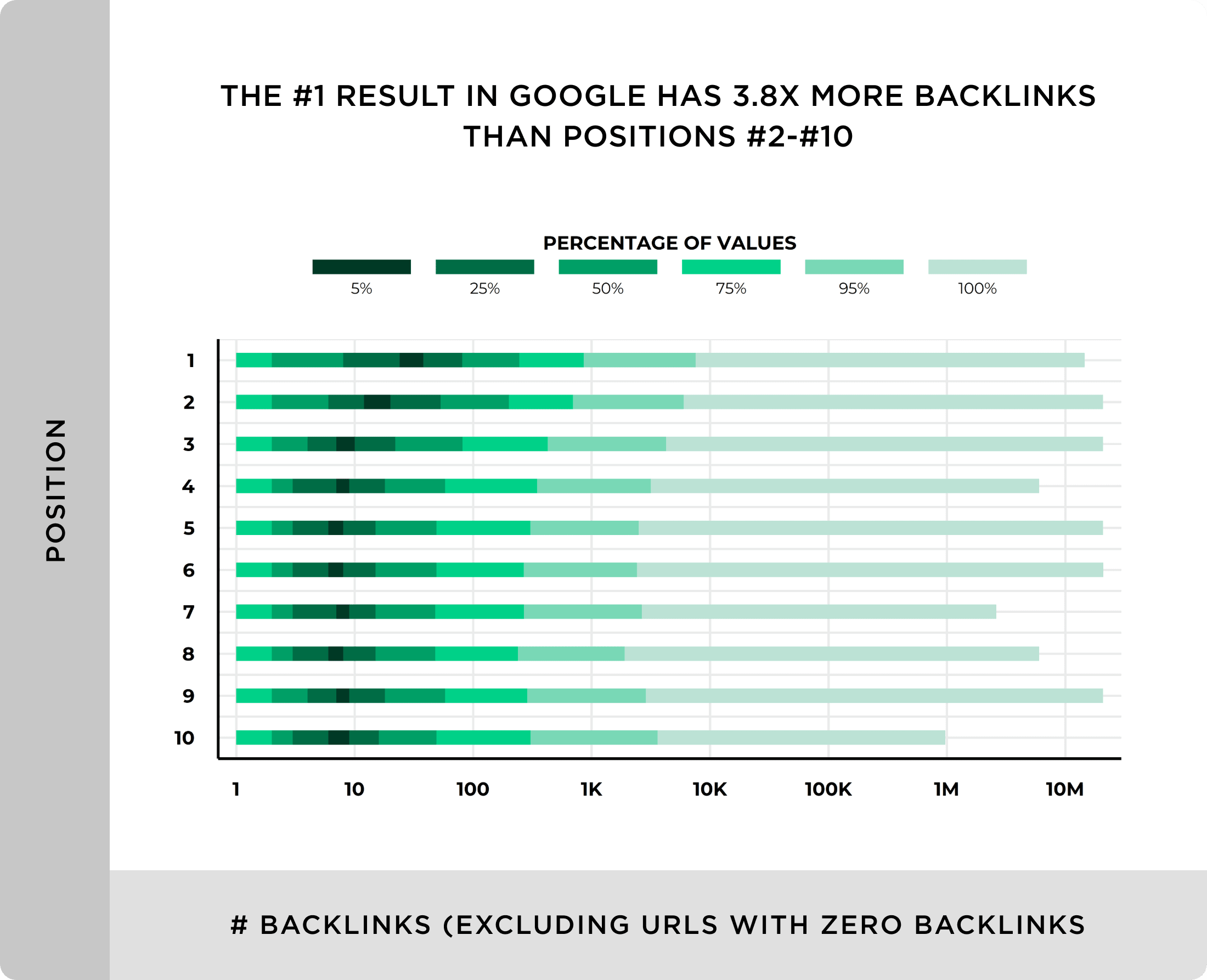
So if a page is ranking on the first page, lots of people have probably linked to it.
That’s step #1.
Next, create a piece of content that’s 5-10x better than what you just found.
For example, I noticed that most of the SEO tools lists out there were pretty short.
So I decided to create something that was 10x better.
Unlike most other lists of SEO tools, my post contained every tool on the market (170+ tools).
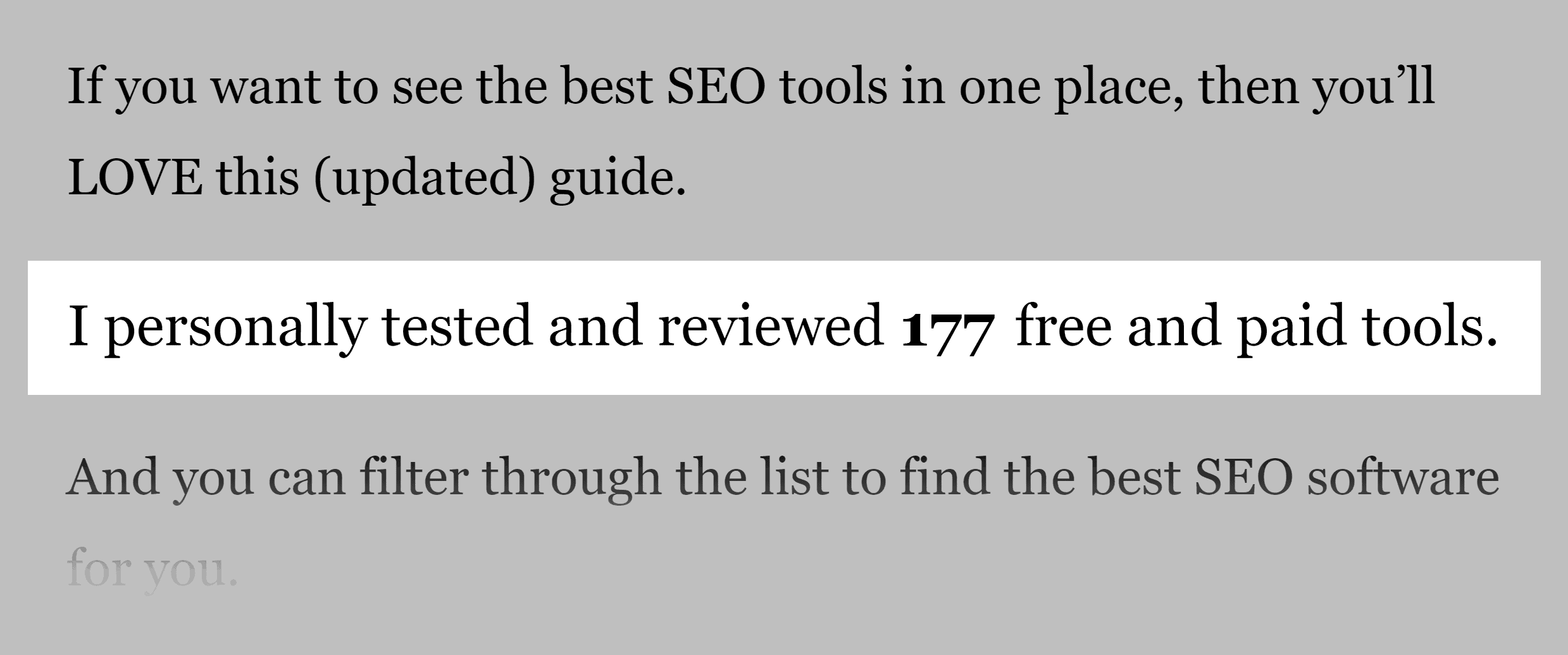
Was this piece of content easy to make? Nope!
But it was worth it. To date, my SEO tools list has been shared on social media 20,777 times…
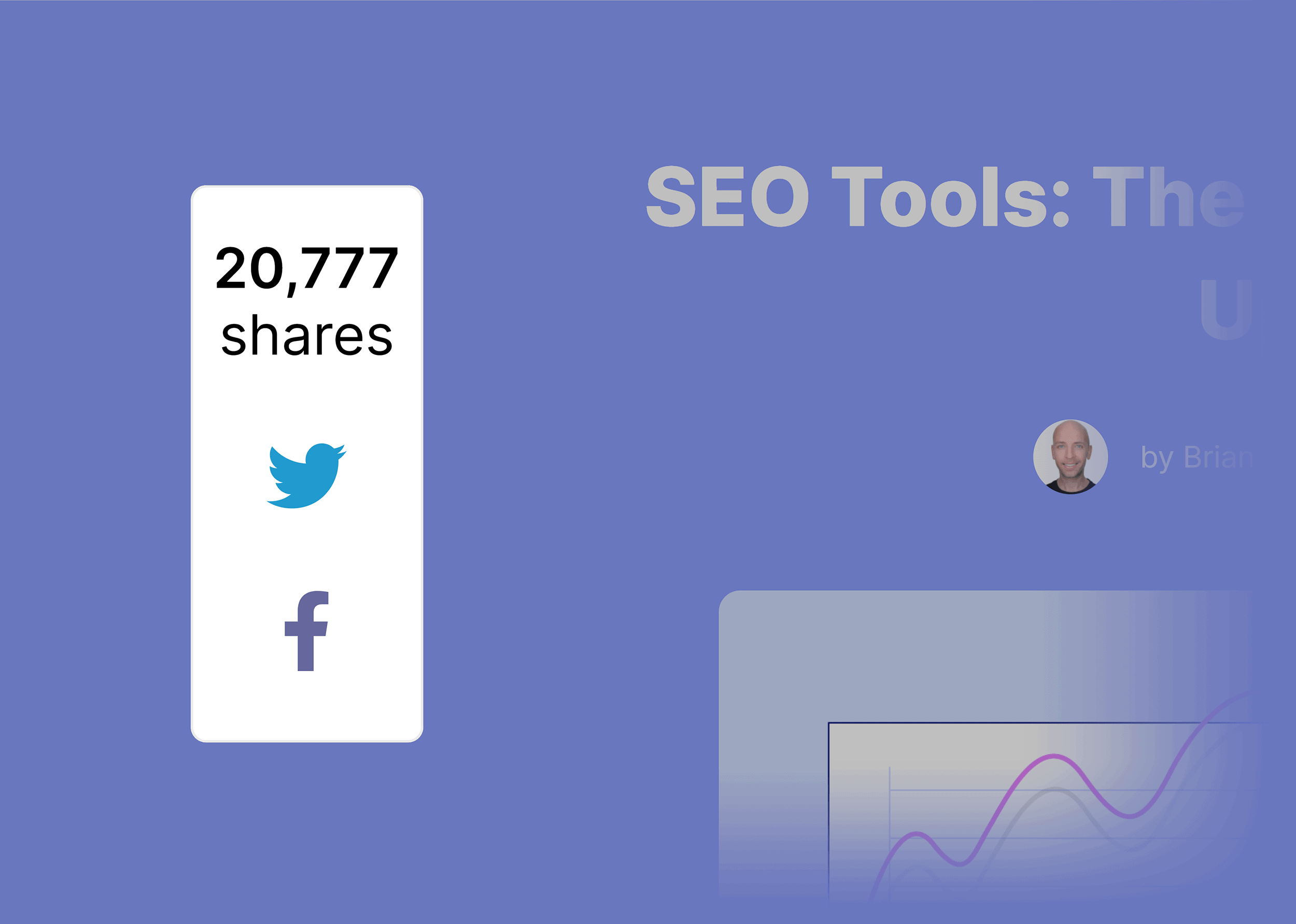
…and has backlinks from over 1.08K different domains:
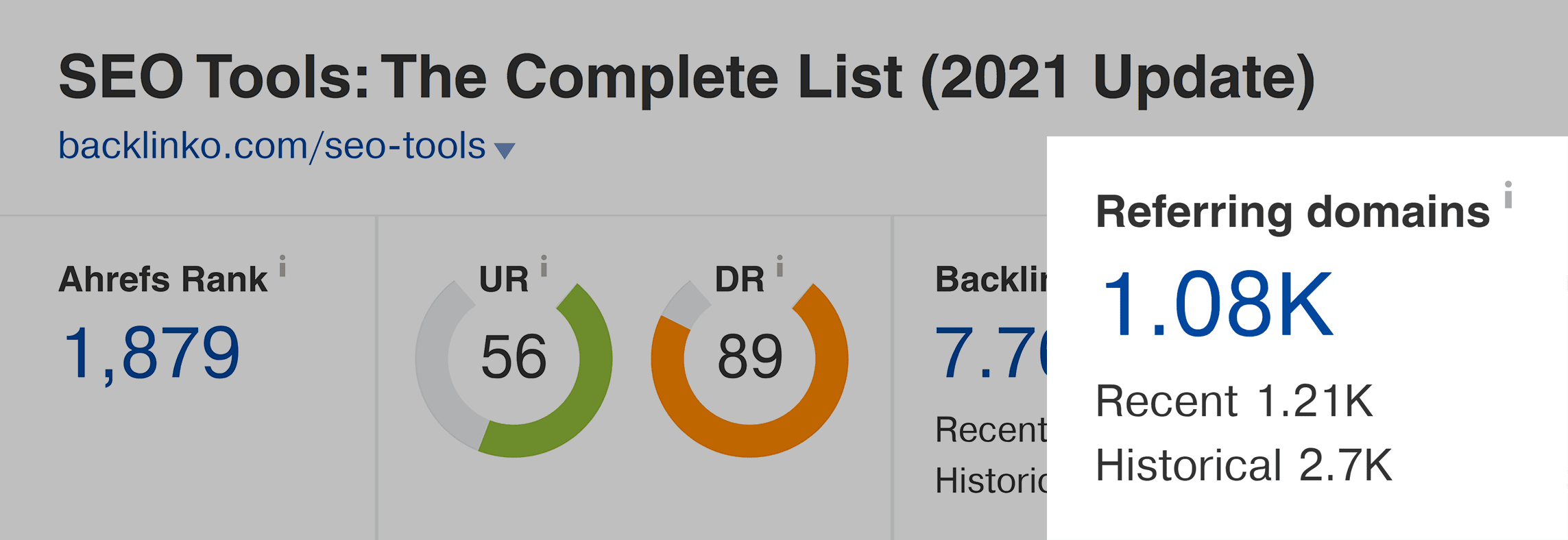
Finally, promote your “Skyscraper” content.
This is key.
Yes, a piece of Skyscraper content already puts you ahead of your competitors.
But to get the most out of your content, you need to actively promote it.
Now:
There are a million ways to promote your content.
So let me show you one quick strategy that works really well for Skyscraper content:
Promote to people that you mention in your post.
For example, I emailed all of the tools that I mentioned in my Skyscraper post. Here’s the exact script that I used:
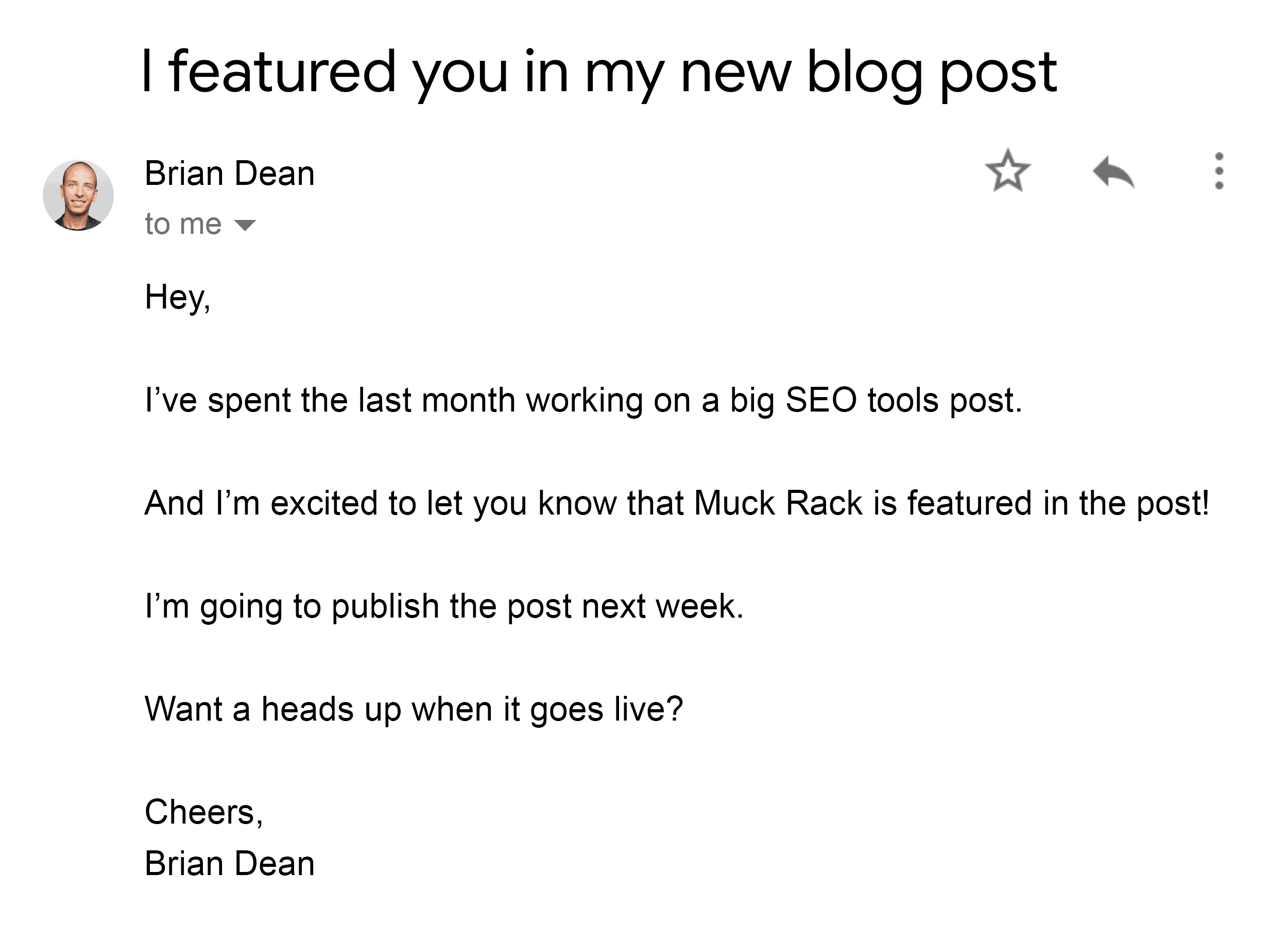
And because I wasn’t pushy or spammy, most people were more than happy to share my content on social media (some of them even linked to it):
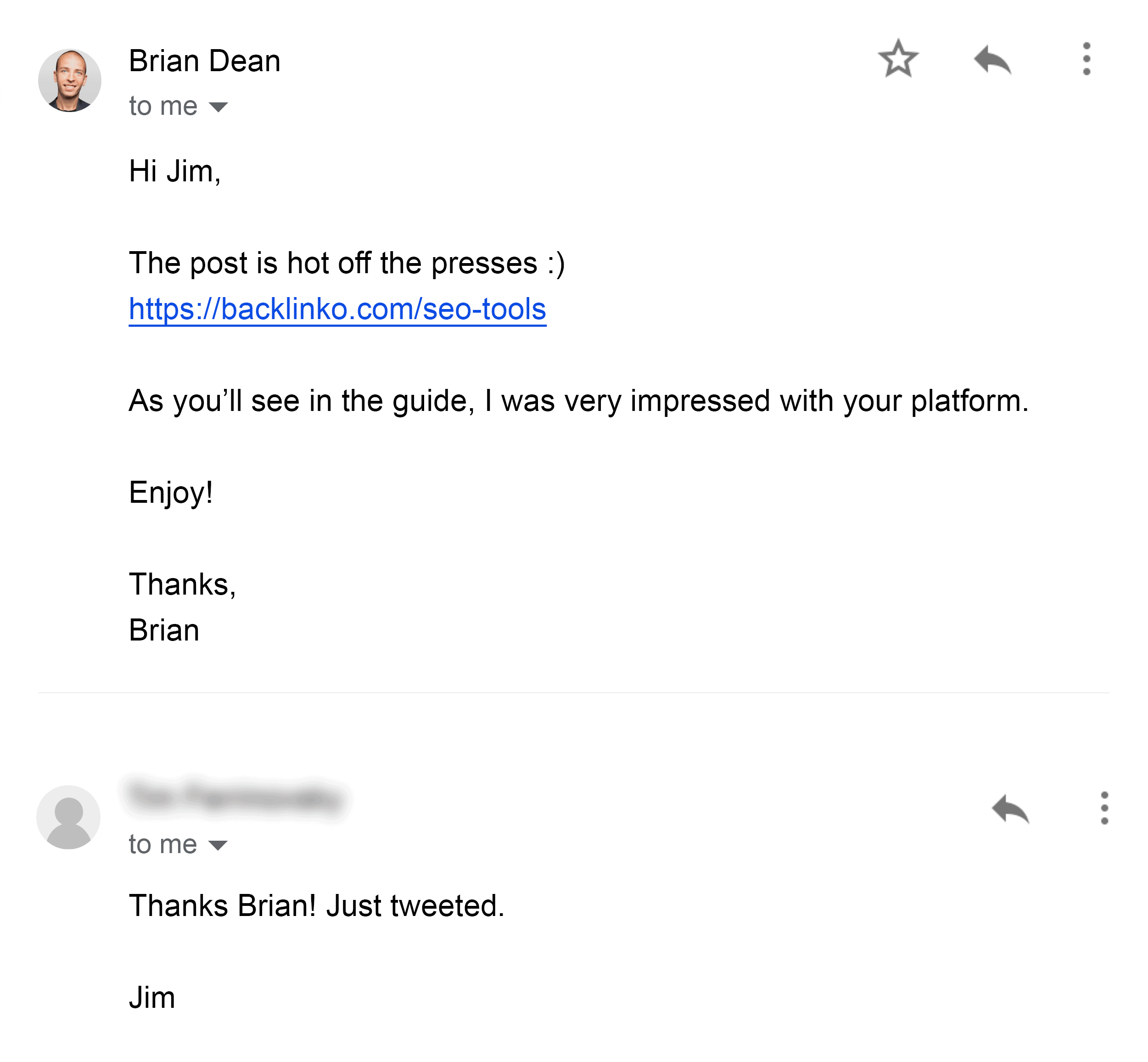
3. Build Links From Outdated Resources
Using “The Moving Man Method” I scored links from…
An authoritative .edu site:
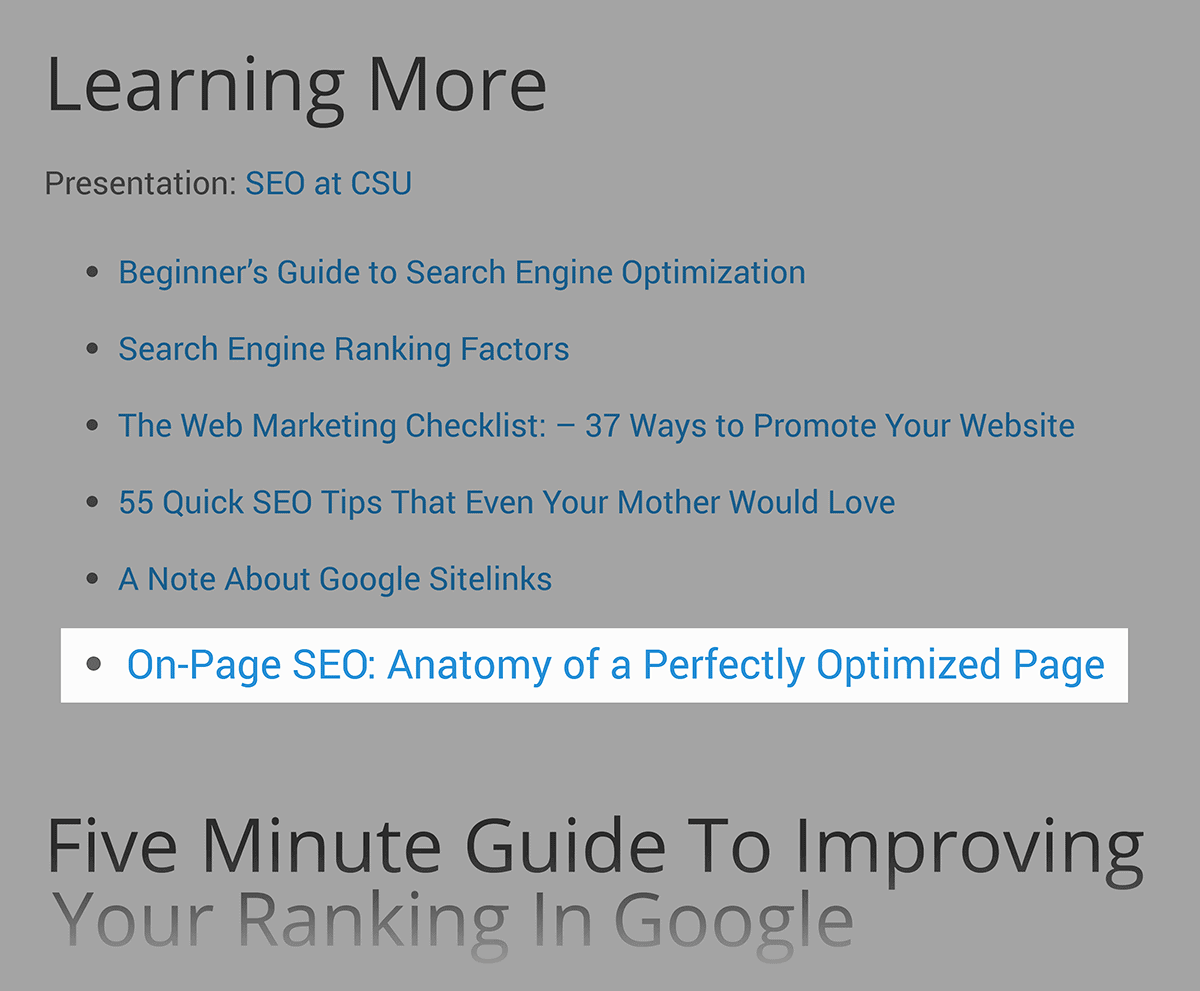
A popular resource page:
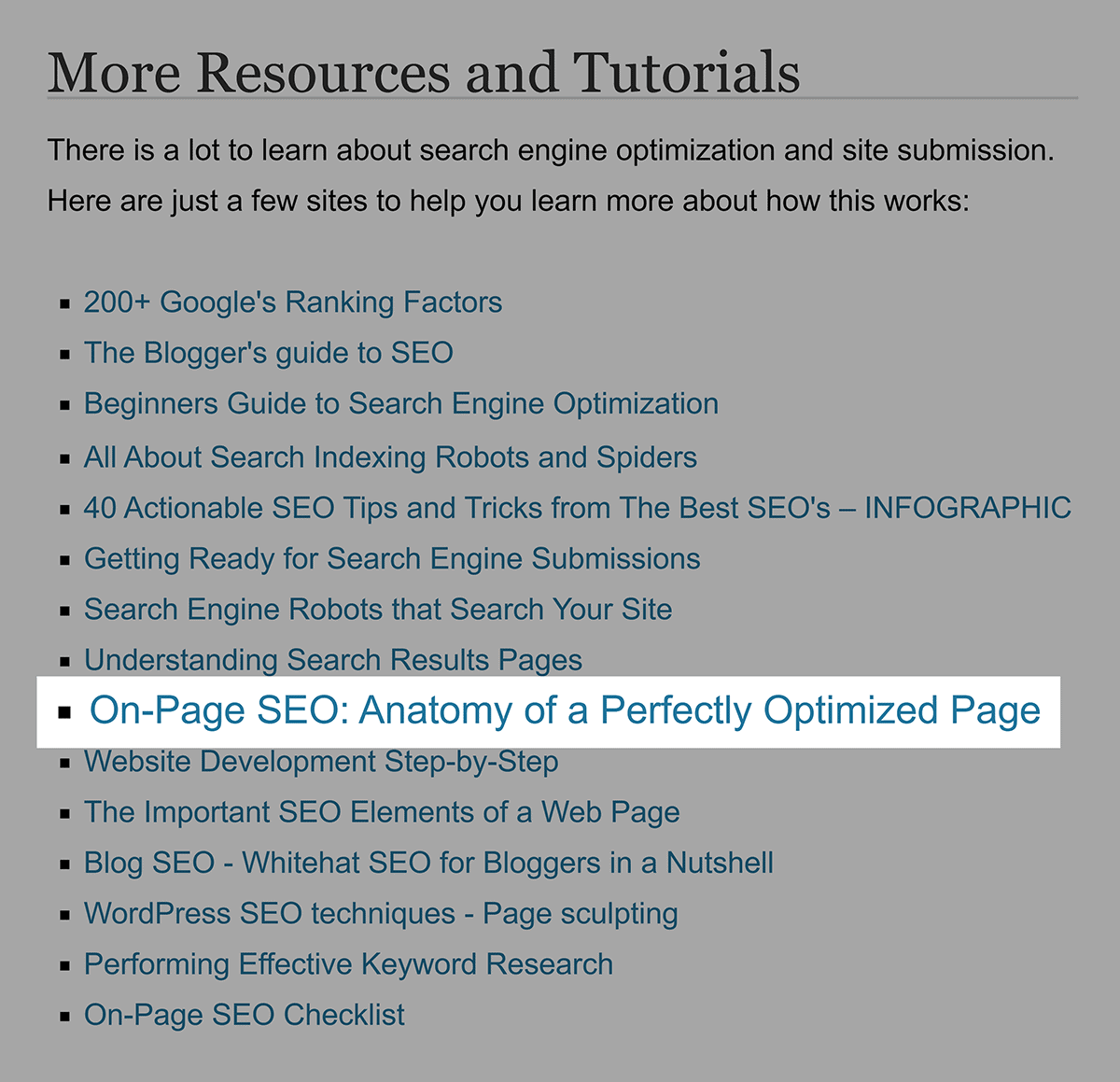
And several contextual links from relevant sites in the SEO and online marketing space, like this:
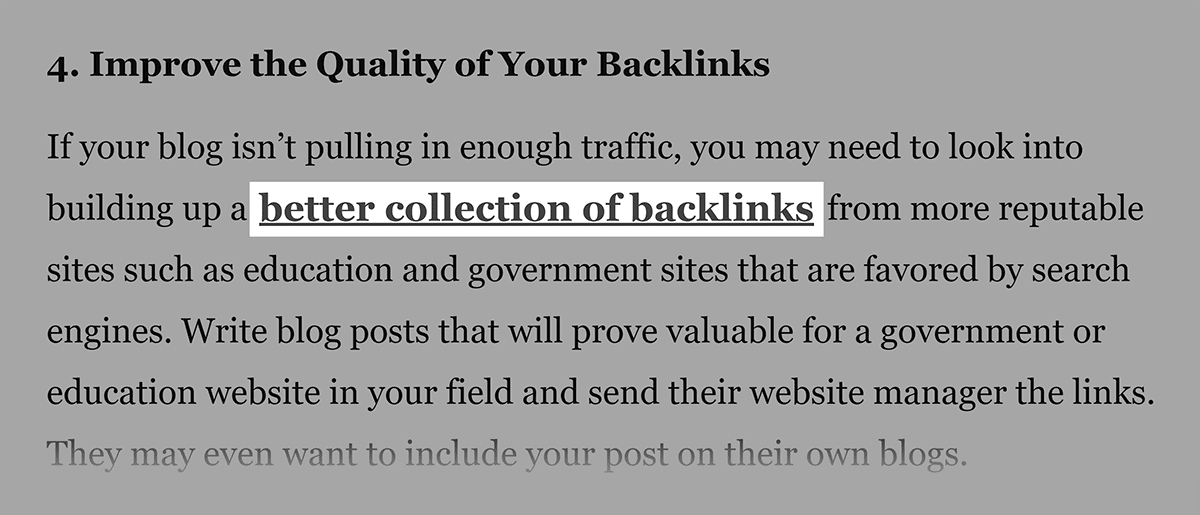
And this:
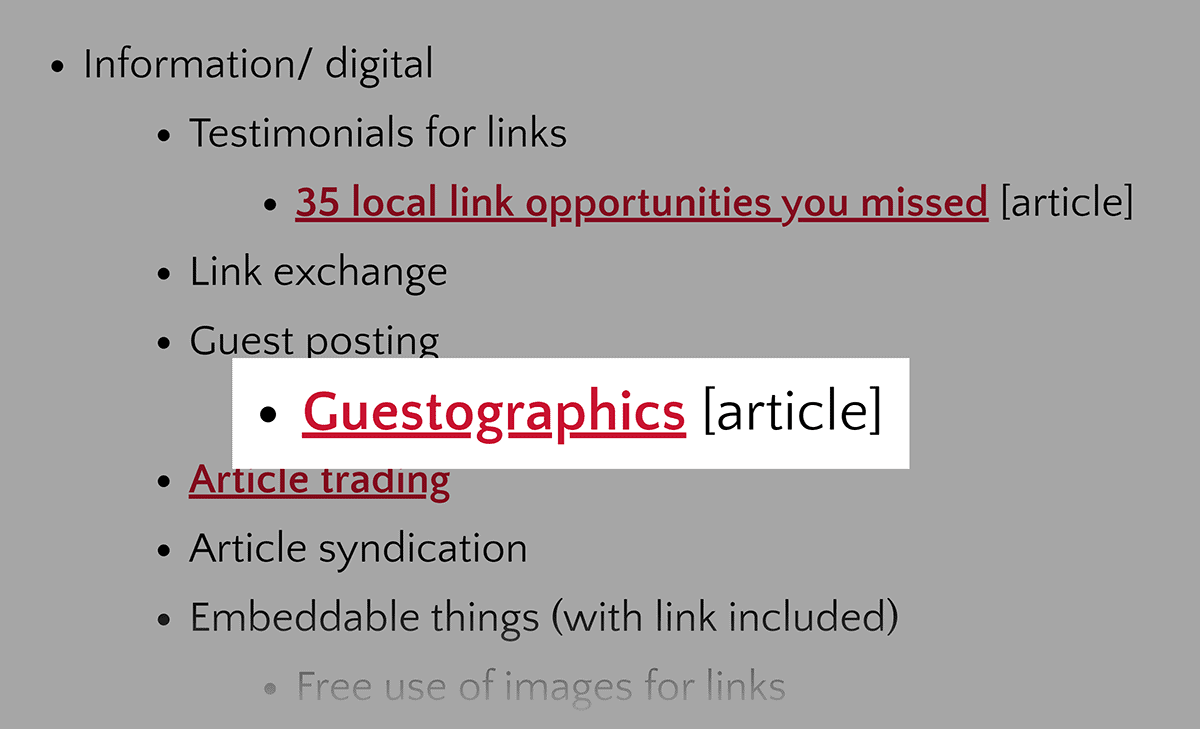
And now it’s time for the steps.
1. Your first step is to find sites in your industry that have:
- Changed names
- Moved to a new URL
- Stopped offering a service
- Stopped updating a resource
- Shut down
How about an example?
A while back SEOMoz changed its name to Moz (and moved its site from SEOmoz.org to Moz.com):
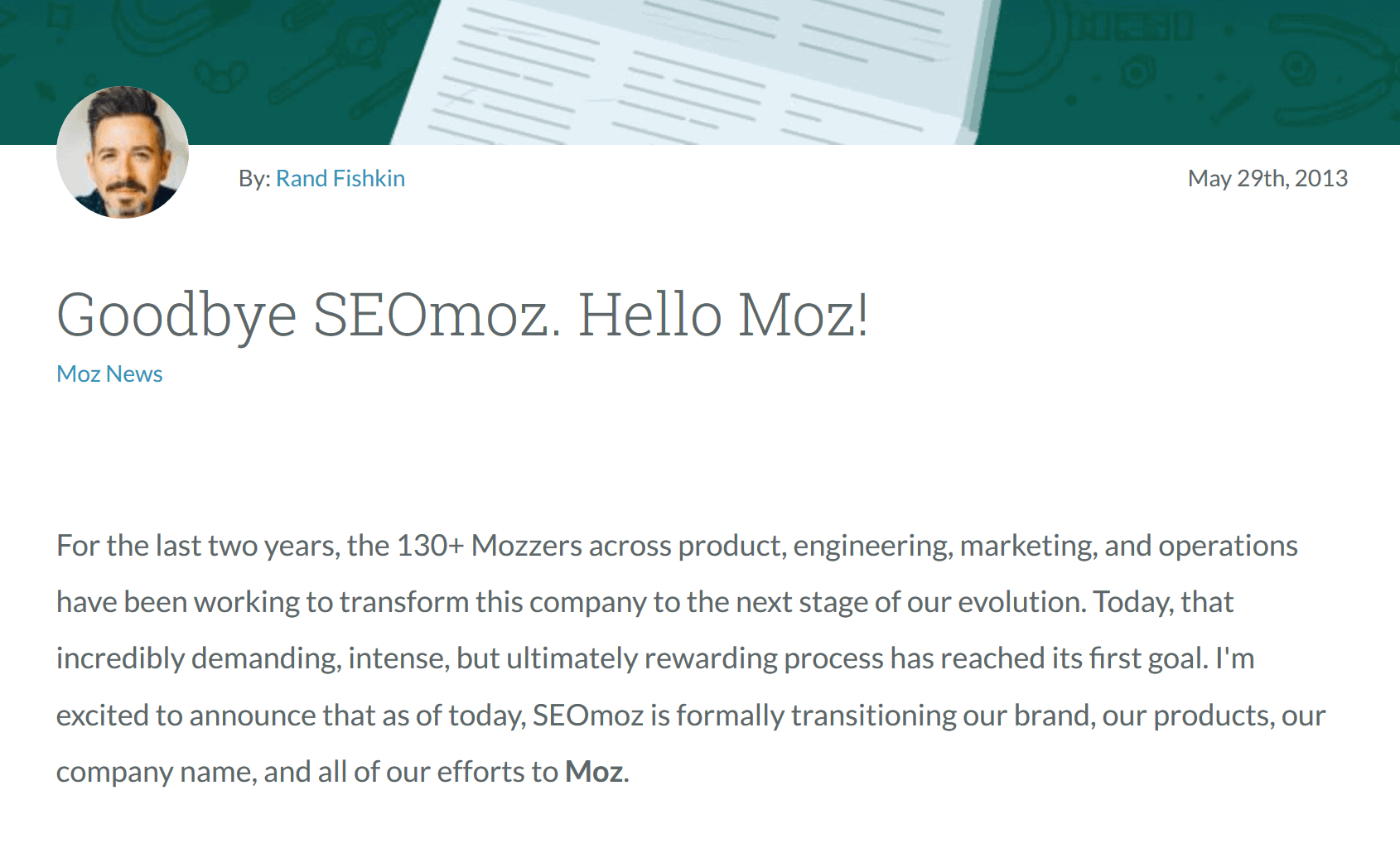
After I heard the news, I realized that this was a PERFECT opportunity to reach out to the hundreds of people still linking to the outdated SEOMoz.org URLs.
2. Our second step is to find sites still linking to the old, outdated URL
Now that you’ve found a site that was recently re-branded or a site feature that’s no longer there, it’s time to find all of the links pointing to that page.
Just grab the URL of the outdated resource and put it into your backlink checking tool of choice.

(I’m using Semrush in this example but there are lots of link building tools that you can use to do the same thing.)
Then, check out all the sites that link to the old URLs.
Depending on the site, you should have quite a few link opportunities to work with.
Either way, you want to focus on sites that have the highest Domain Authority (DA).
3. Last up, reach out and get your links.
Your last step is to reach out to all of the people that still link to the outdated resource.
You want to give them a quick heads-up about their outdated link…and gently suggest that they add your link to their site.
I tested a few different outreach email scripts for my SEOmoz/Moz campaign. Here’s the one that worked best:
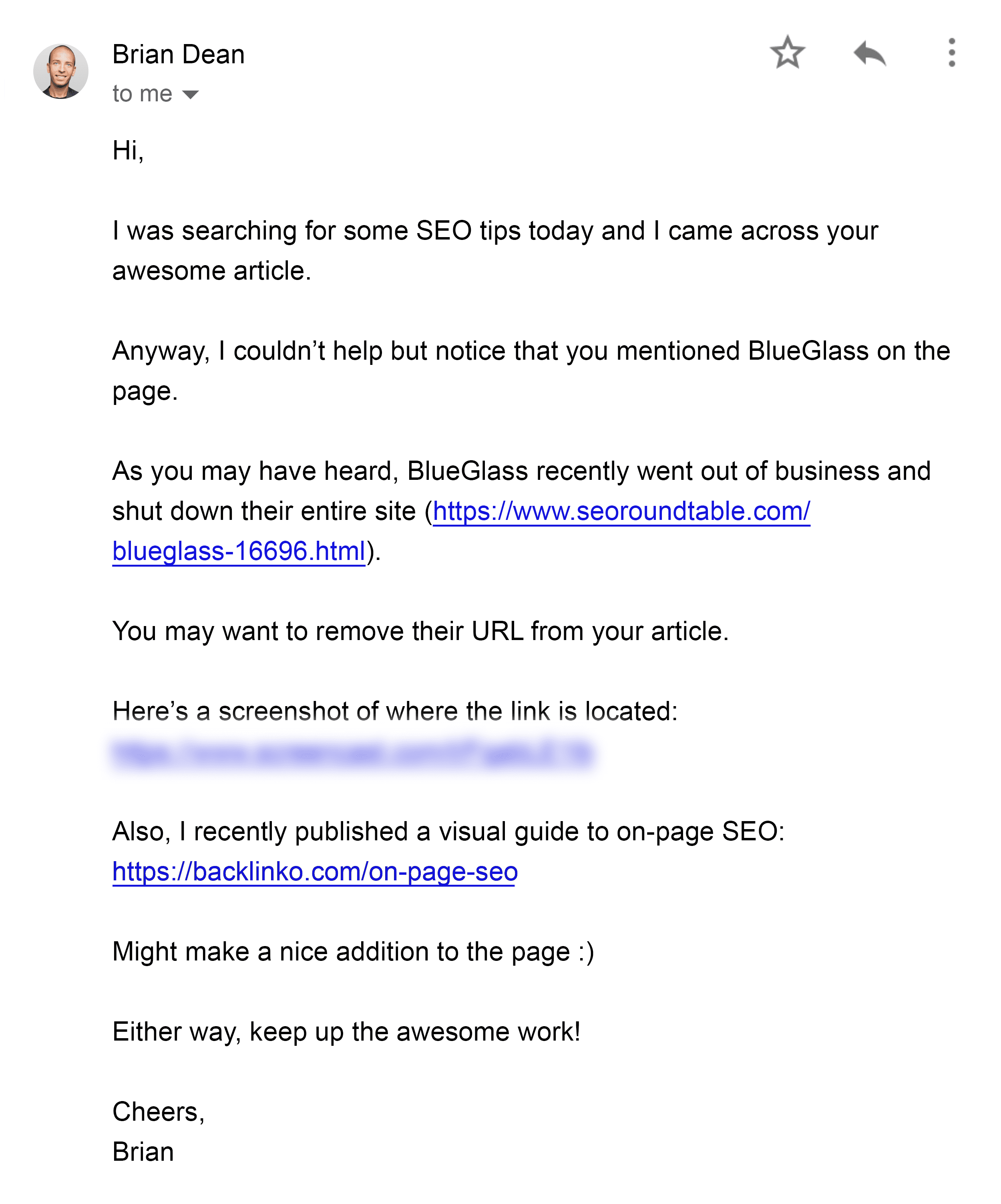
And because I added value to their site twice (once from the heads up about their outdated link and again by showing them my valuable resource) people were more than happy to add my link to their page:
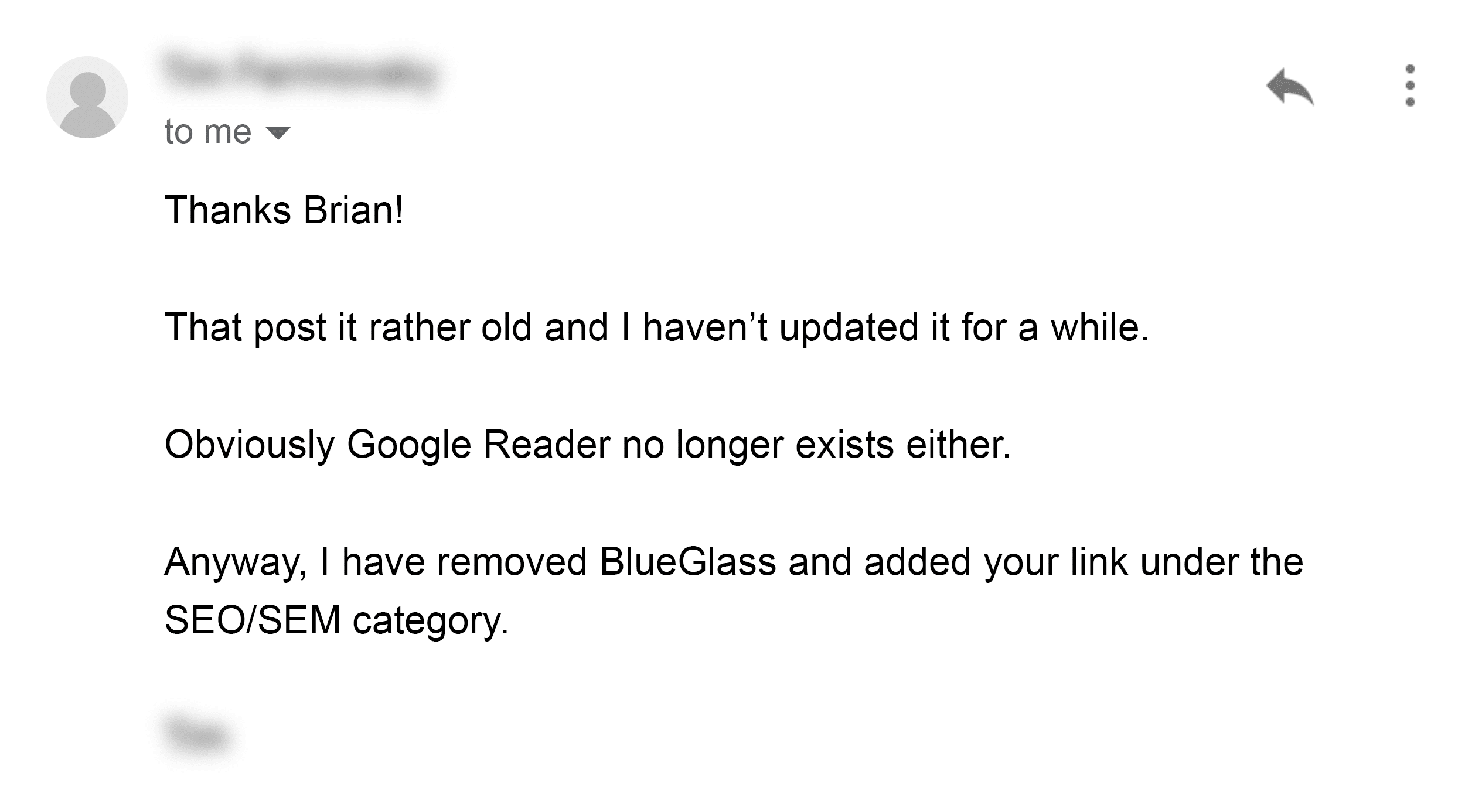
That’s all there is to it 🙂
4. Use Content Formats Proven To Generate Links
A while ago, BuzzSumo and I did a study of 912 million blog posts and articles:
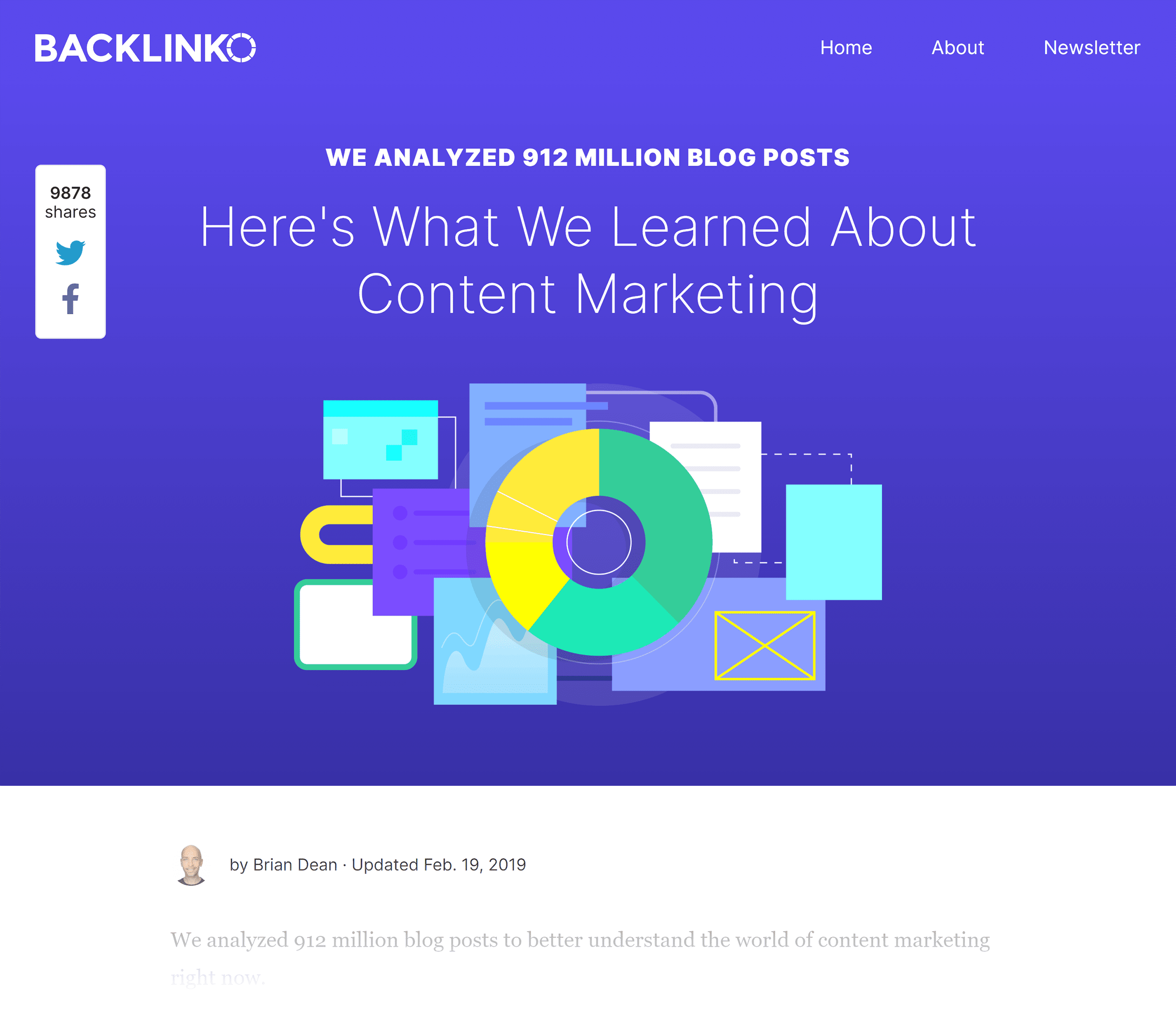
So, what did we find?
We discovered that most content is completely ignored.
In fact, they found that 94% of all online content gets ZERO links.
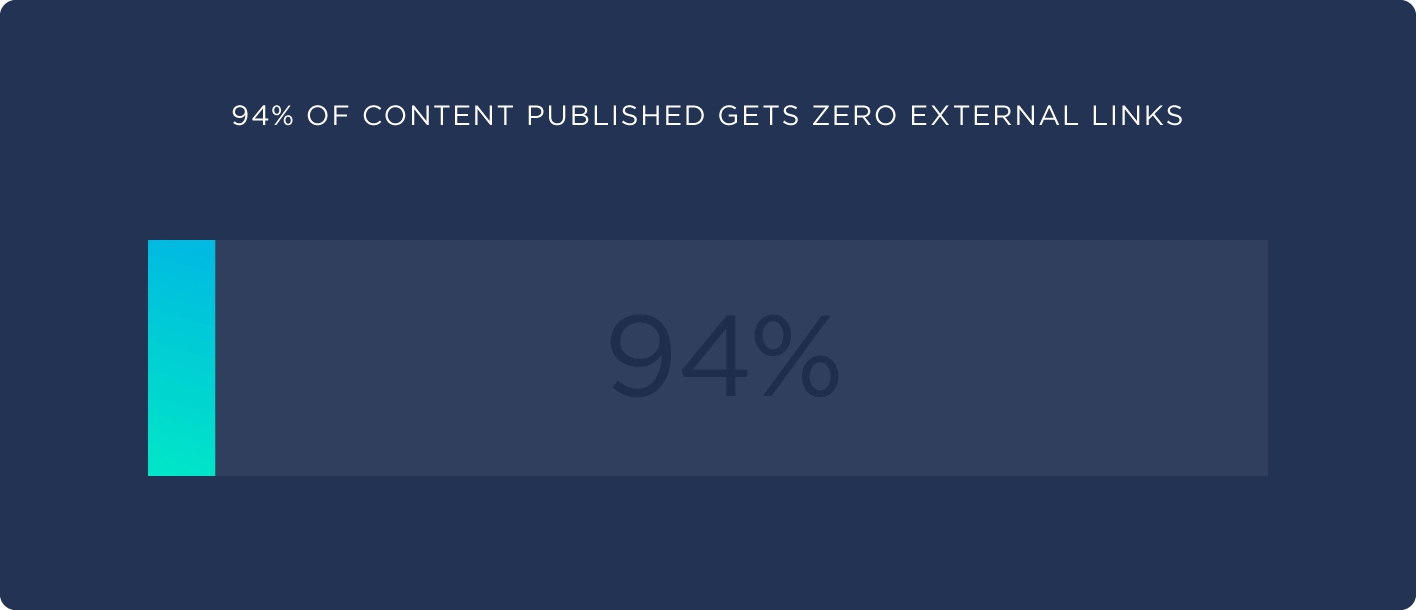
That’s the bad news.
The good news is, we found that certain types of content consistently performed better than others.
Specifically, we discovered that the following content formats tended to generate lots of backlinks:
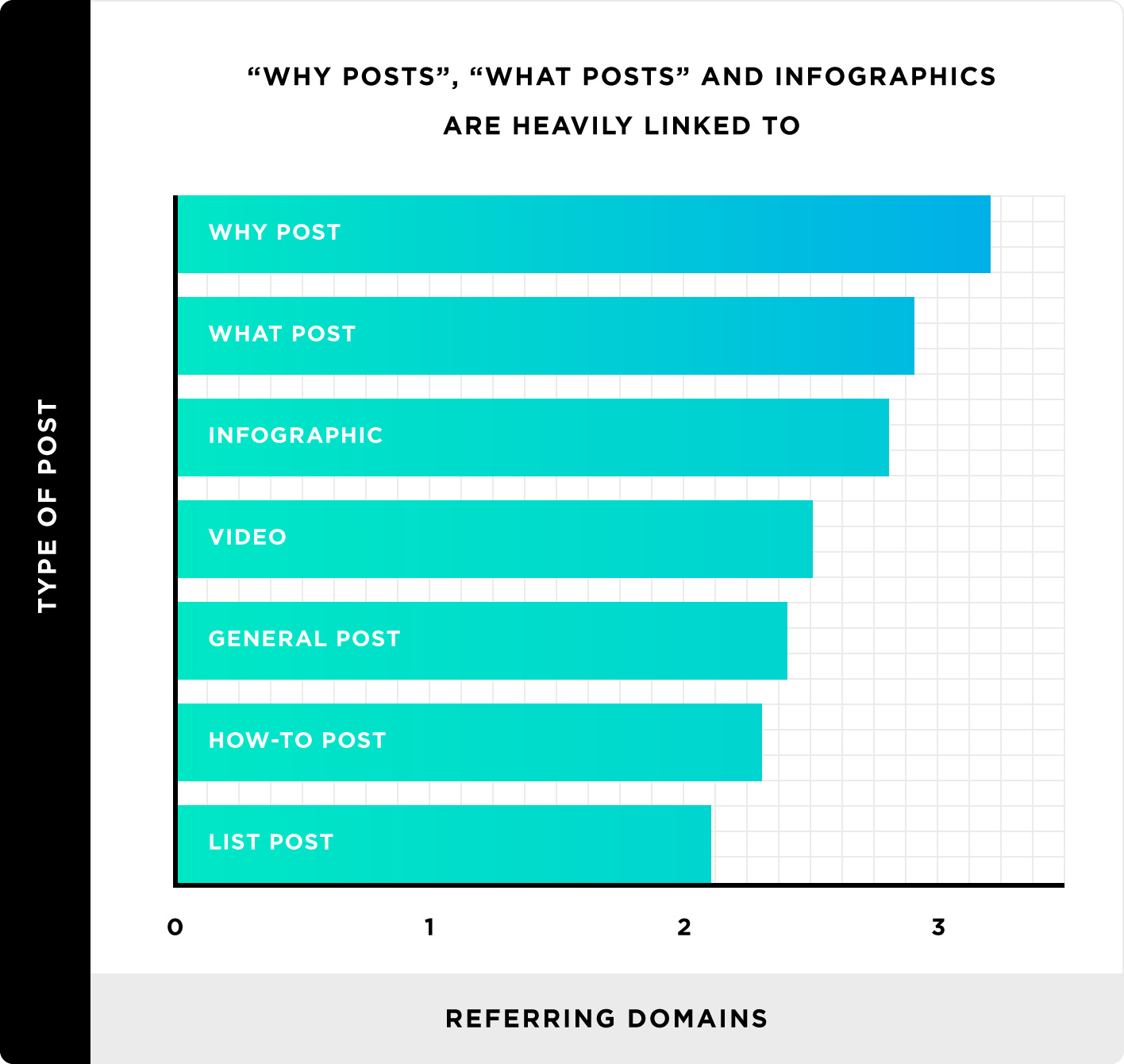
In other words, if you want to get backlinks, focus on these content formats:
- “Why” Posts
- “What” posts
- Infographics
- Videos
Am I saying: “Just publish a bunch of why posts and infographics?”
Of course not.
If you want to get backlinks today, your content has to be amazing.
But these formats give you a starting point for writing amazing content that actually works.
5. Publish Ultimate Guides
You already know that the only way to move your site to the top of Google is to build high-quality backlinks (and lots of them).
That much is clear.
But HOW do you get other sites to actually link to you?
Ultimate Guides.
Seriously.
For example, here’s an Ultimate Guide to link building that I published a while back:
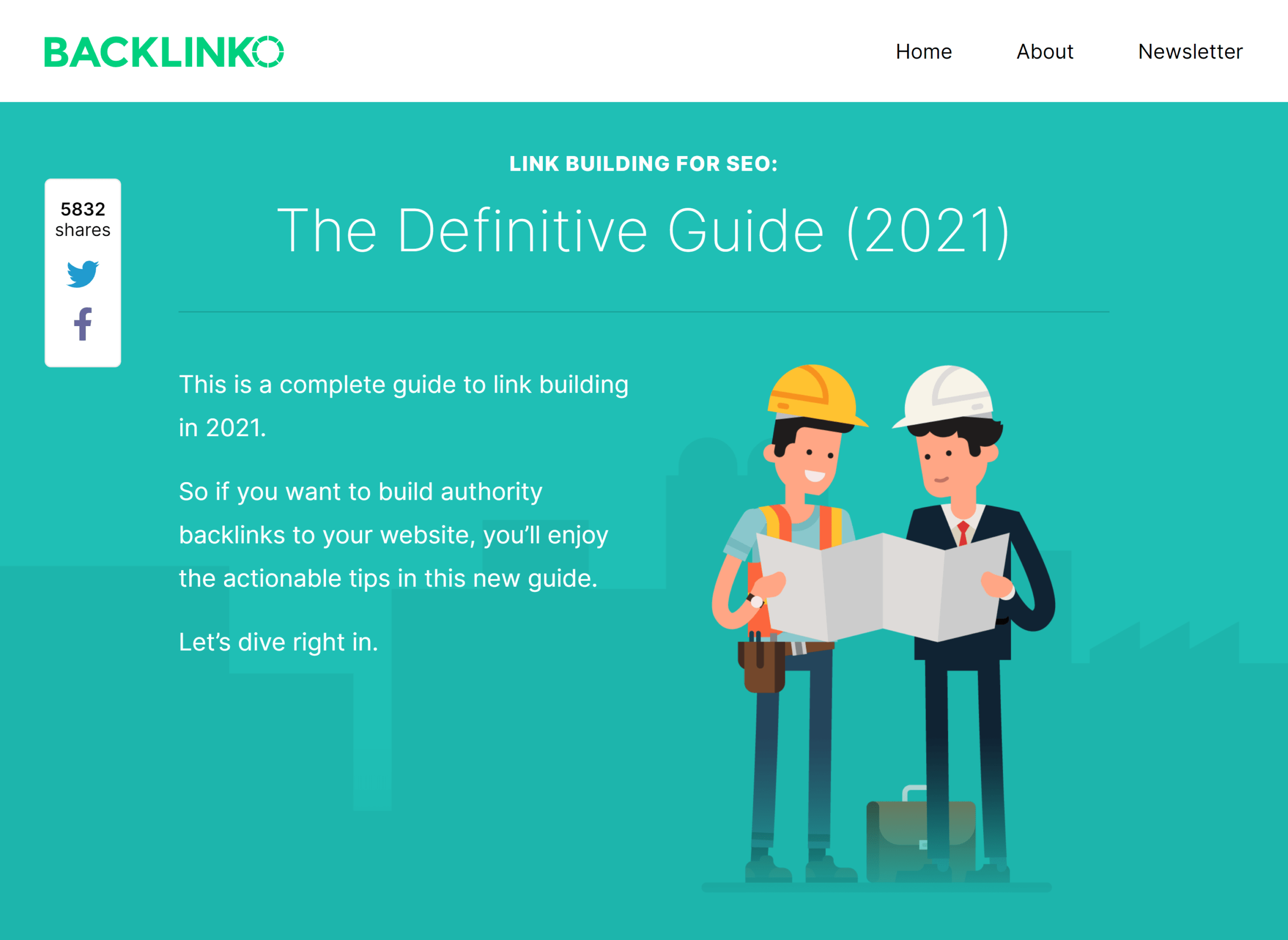
Even though I wrote that guide 6 years ago, it continues to generate links today (in 2024).
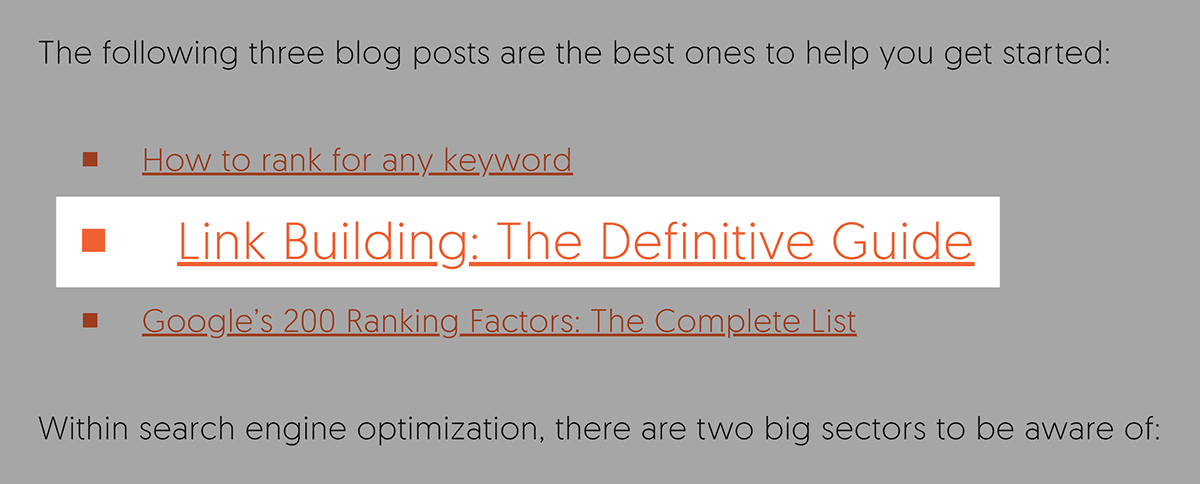
Why do Ultimate Guides work so well?
First, comprehensive guides tend to contain A LOT of content on a single page. In fact, my guide to link building is a whopping 4,834 words.
According to lots of SEO ranking factor studies (including ours), long-form content tends to perform better in Google than short articles:
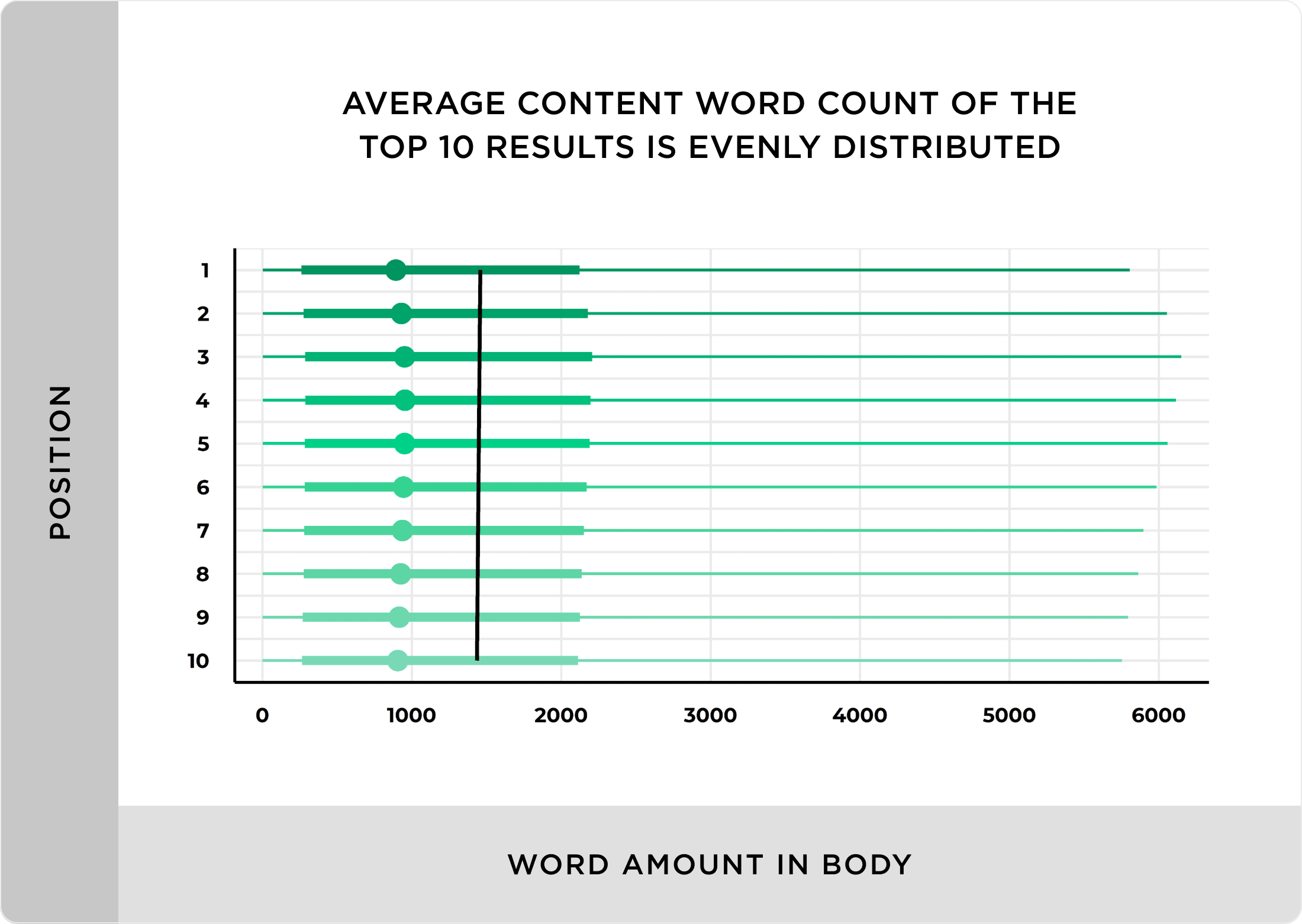
Also, ultimate guides cover an entire topic on a single page.
And because your guide is the “go-to” resource for a topic, people will link to it whenever they write about that topic on their blog:

Here’s exactly how to create an ultimate guide, step-by-step.
1. Your first step is to find a topic for your guide.
This is important.
You want to choose a popular topic that hasn’t been covered to death already.
(In other words: you don’t want to publish the 18th ultimate guide on a topic.)
For example, when I published my link building guide, I noticed the first page of Google had some helpful posts…
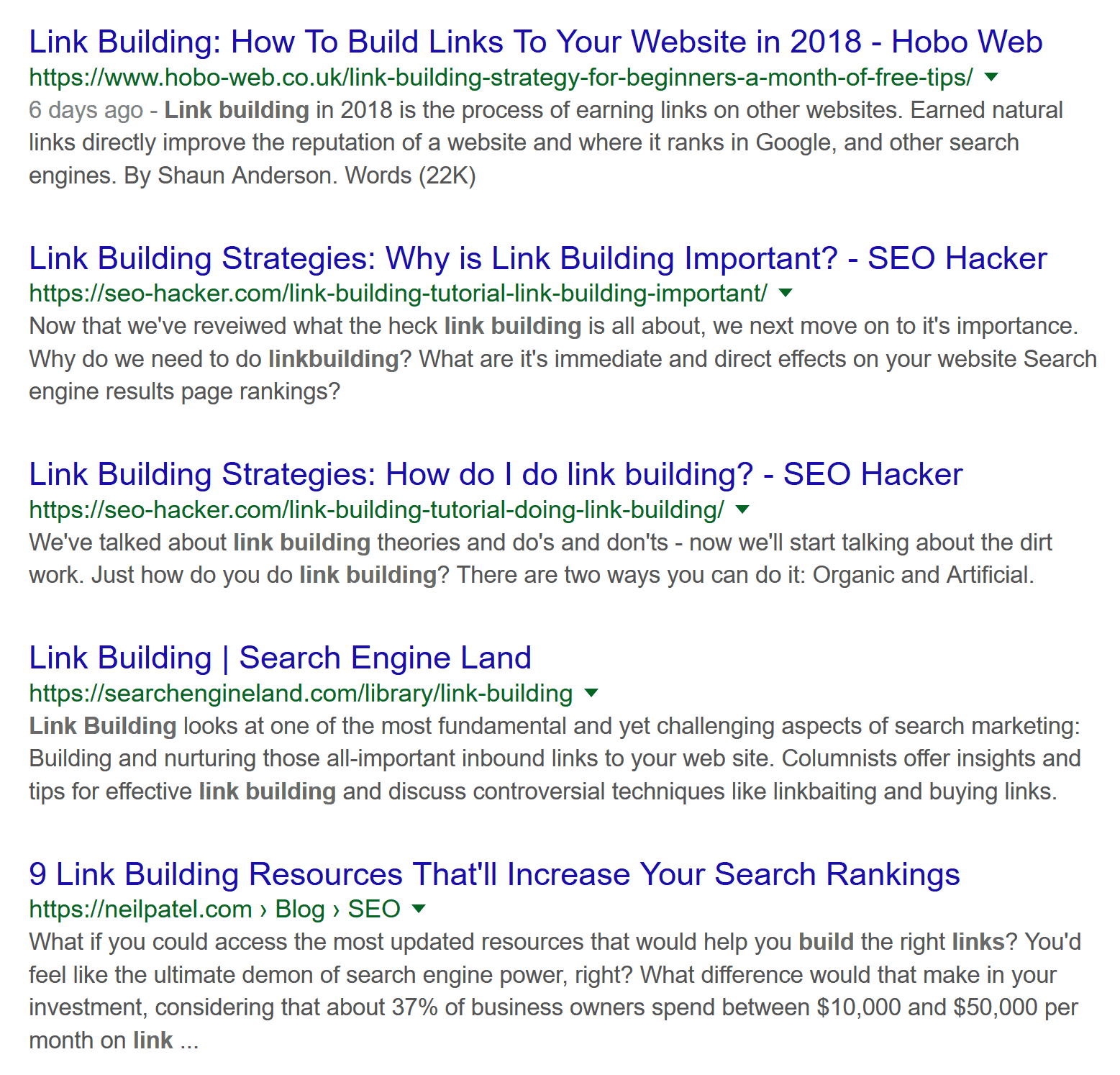
…but no ultimate guides.
I also considered writing an ultimate guide to SEO. But there were already a thousand guides on that topic:
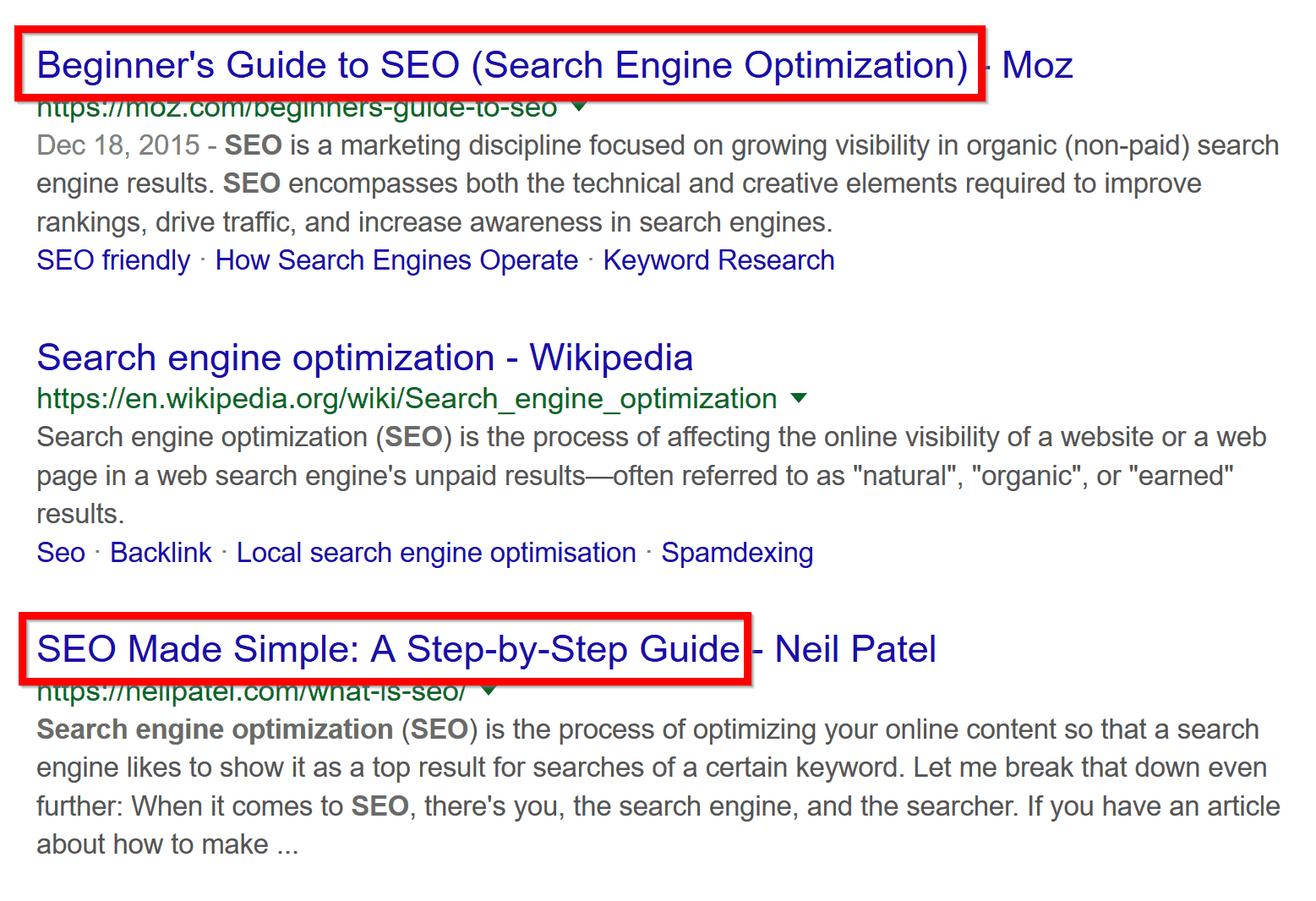
So I went with link building.
2. Next, outline your ultimate guide.
This is easy.
Just list out subtopics that make up your larger topic.
For example, for my link building guide, I simply listed out subtopics like this:
- What is link building?
- Black hat SEO
- White hat SEO
- Anchor text
- Content
- Email outreach
- Advanced tips
And many of these subtopics each became sections of my guide:
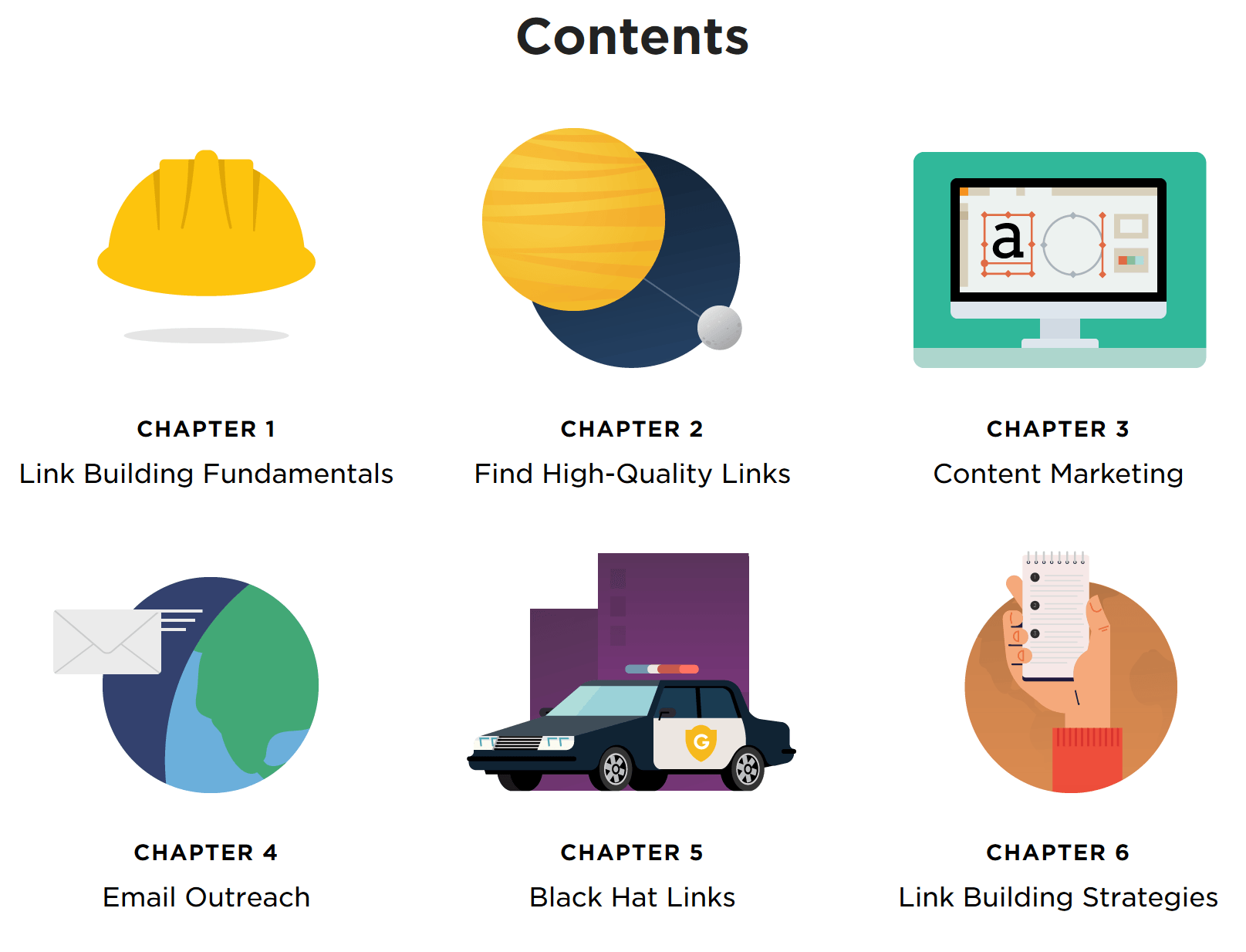
3. Lastly, write your Ultimate Guide.
And remember:
Don’t be afraid to cover everything there is to know about a topic.
That way, your guide will be seen as the definitive resource.
(And like I mentioned earlier, longer content tends to generate more backlinks, shares… and higher rankings in Google.)
6. Use Branded Strategies and Techniques
Remember strategy #3 from this guide?
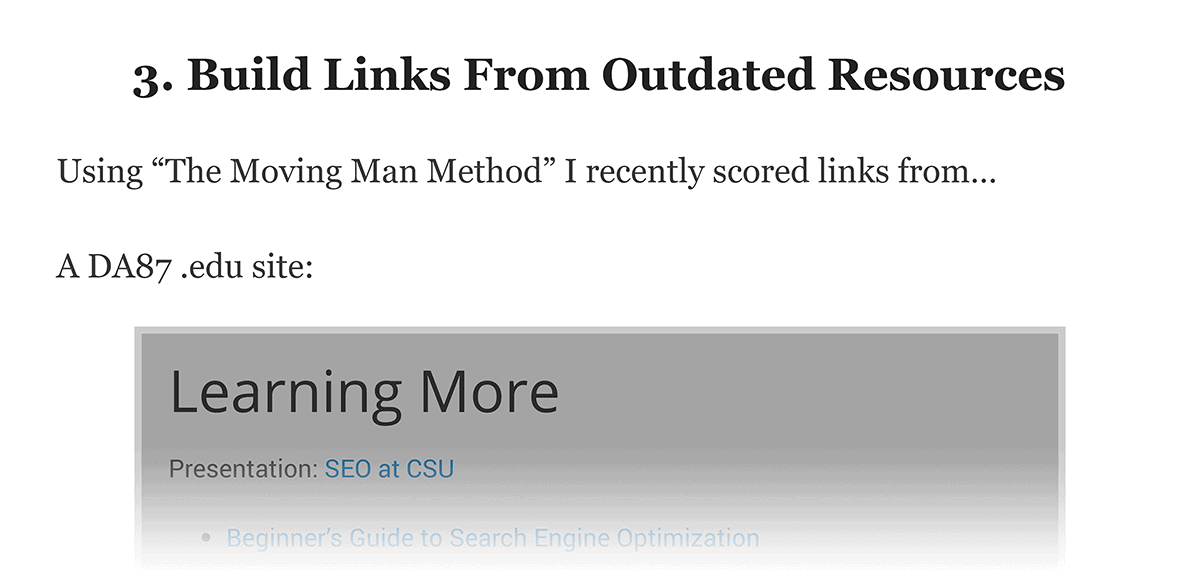
You might have noticed that I didn’t just outline the strategy… I also named it.

This wasn’t the first time that I mentioned the “Moving Man Method” in a blog post.
In fact, thanks to naming my strategy, people link to my content on The Moving Man Method fairly often:
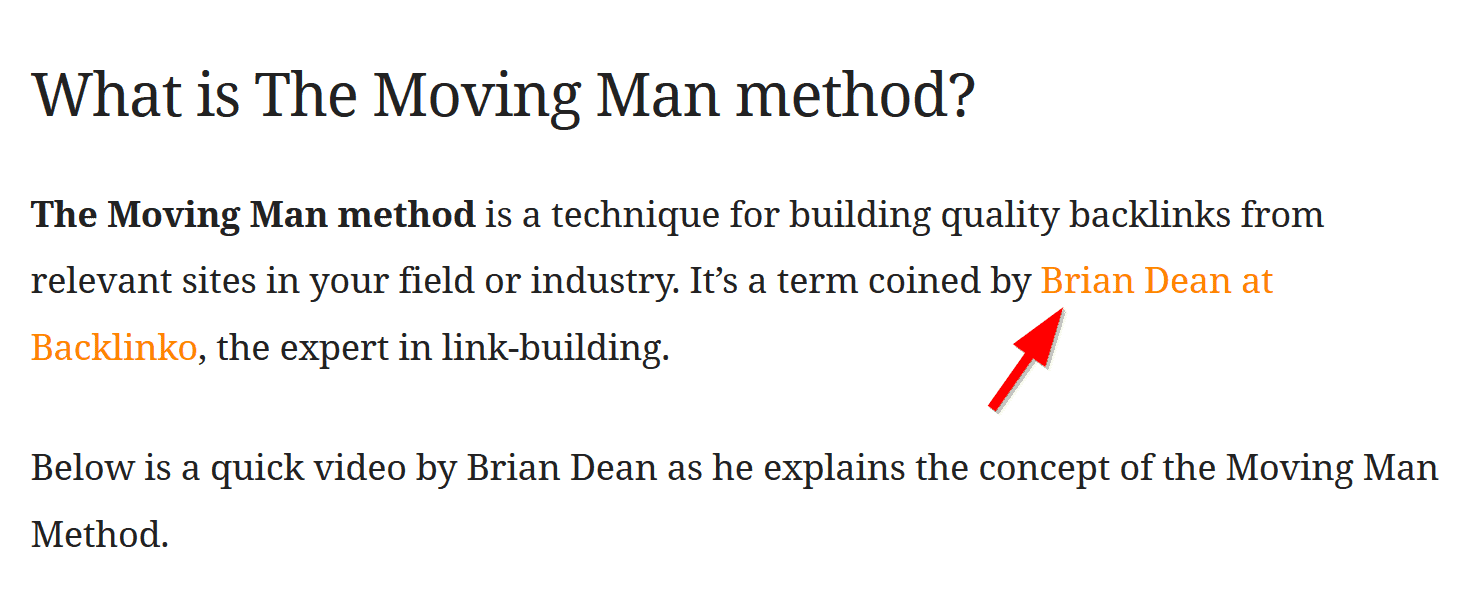
(People even publish entire blog posts about it.)
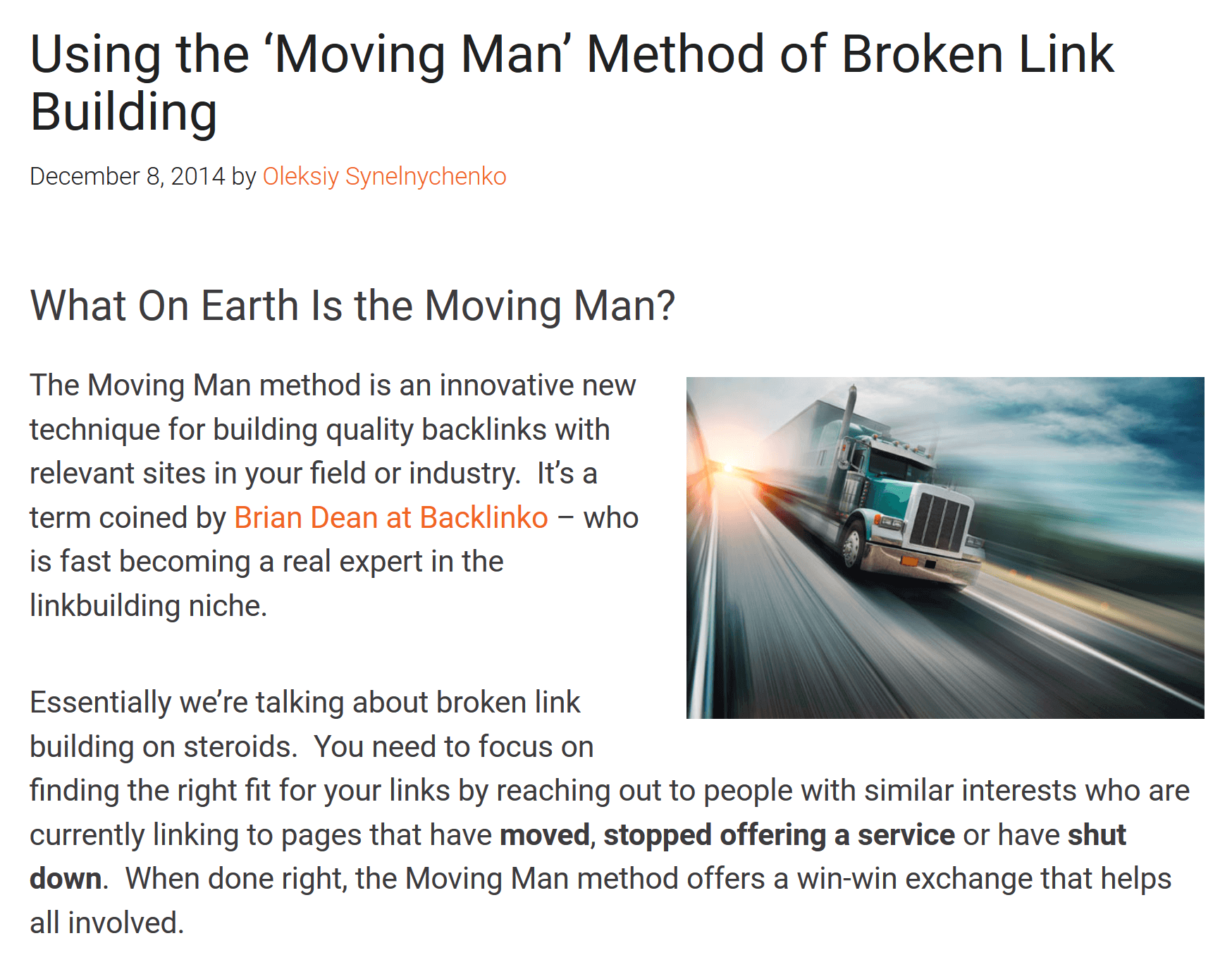
And those links only happened because I gave my strategy a memorable name.
How about another example?
Ramit Sethi created a strategy for looking like a rockstar at meetings called “The Briefcase Technique“:
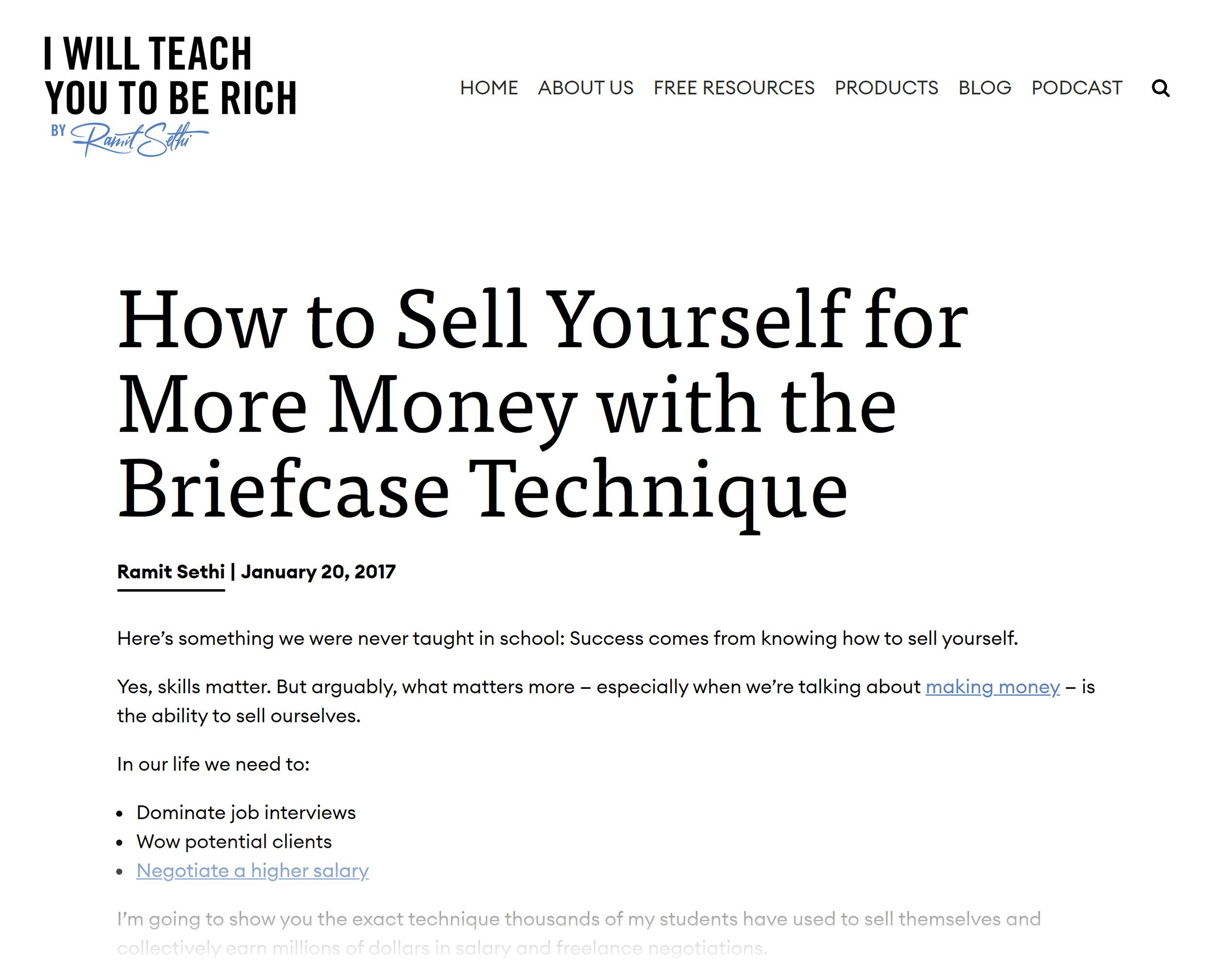
And because Ramit named his strategy, he got a bunch of amazing links:
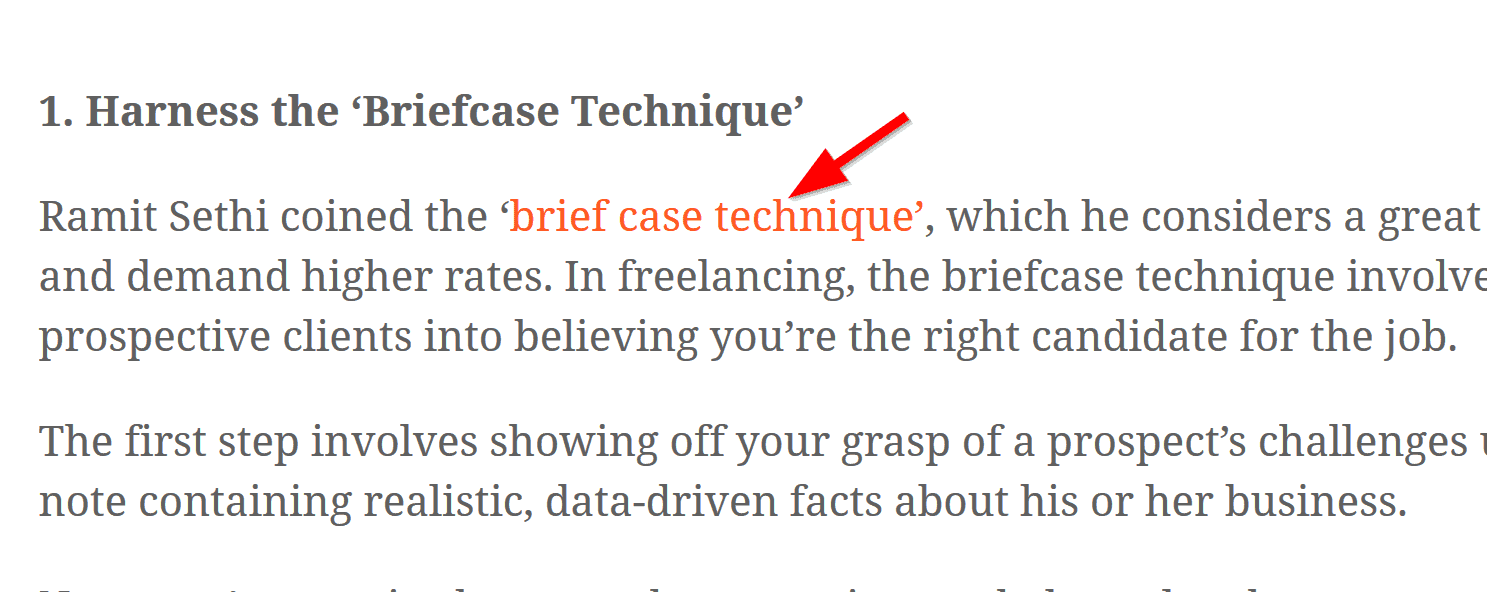
Now that you’ve seen how well this can work, it’s time to cover the specific steps:
Step #1: Develop a Unique Strategy, Tip, or Tactic
This sounds harder than it actually is.
All you need to do is come up with a strategy that has SOMETHING unique about it.
(In other words, the entire strategy doesn’t need to be unique.)
Derek Halpern puts it best:
For example, let’s look at The Moving Man Method.
People have been using broken link building as part of their link building campaigns for years.
So what made my strategy different?
My unique twist was that the links weren’t necessarily broken (as in, they didn’t necessarily show a 404 error).
The links I used for The Moving Man Method technically worked… they were just outdated:
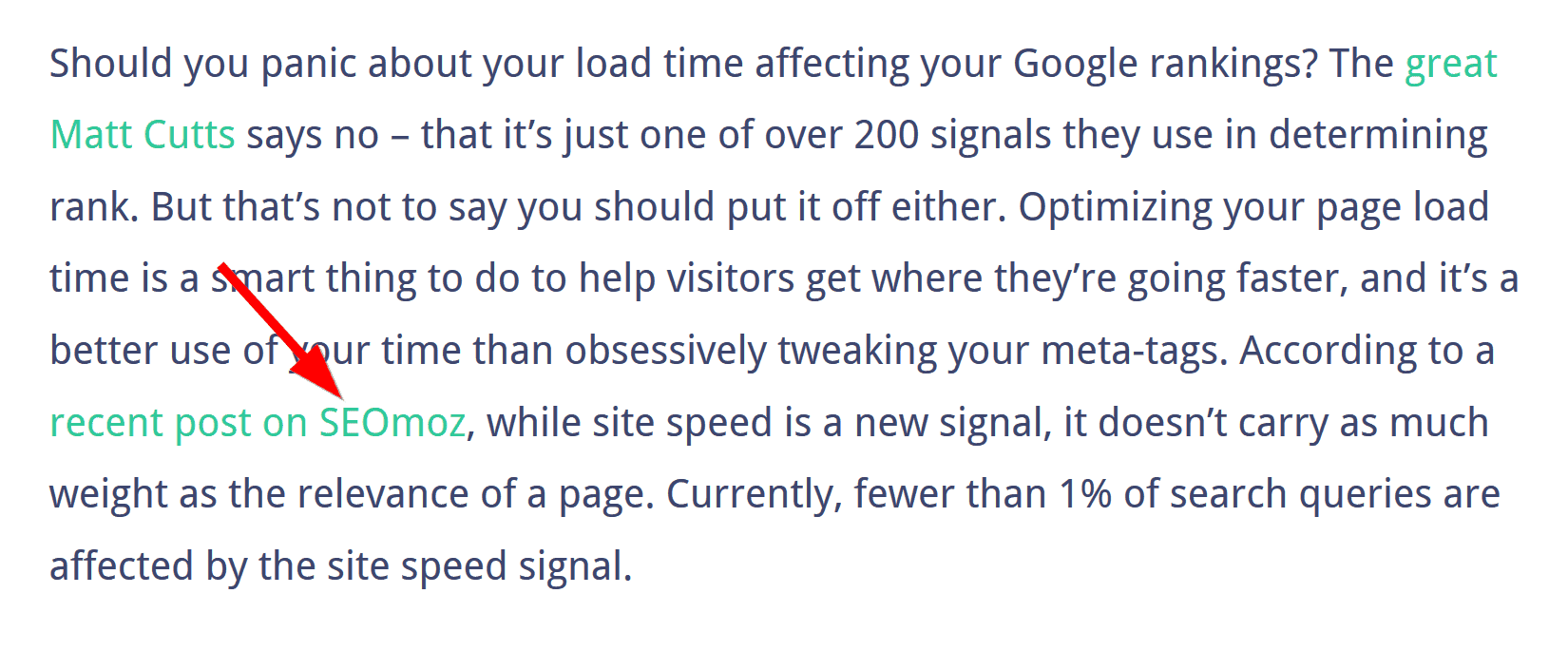
And that was unique enough.
Step #2: Next, name your strategy.
I called my strategy The Moving Man Method because you’re helping the site owner “move” their link.
Not the most creative name, but it gets the job done.
So yeah, just make sure the name describes what your strategy does.
Other than that, try to use one of these words in your strategy name:
- Method
- Technique
- Approach
- System
- Blueprint
You get the idea 🙂
Step #3: Publish the strategy as part of a blog post.
Your last step is to show people that your new strategy actually works.
How?
Publish your strategy in the form of a blog post. Preferably a case study.
(That way, people have something to link to when they reference your technique.)
For example, here’s the post I used to announce The Moving Man Method to the world:
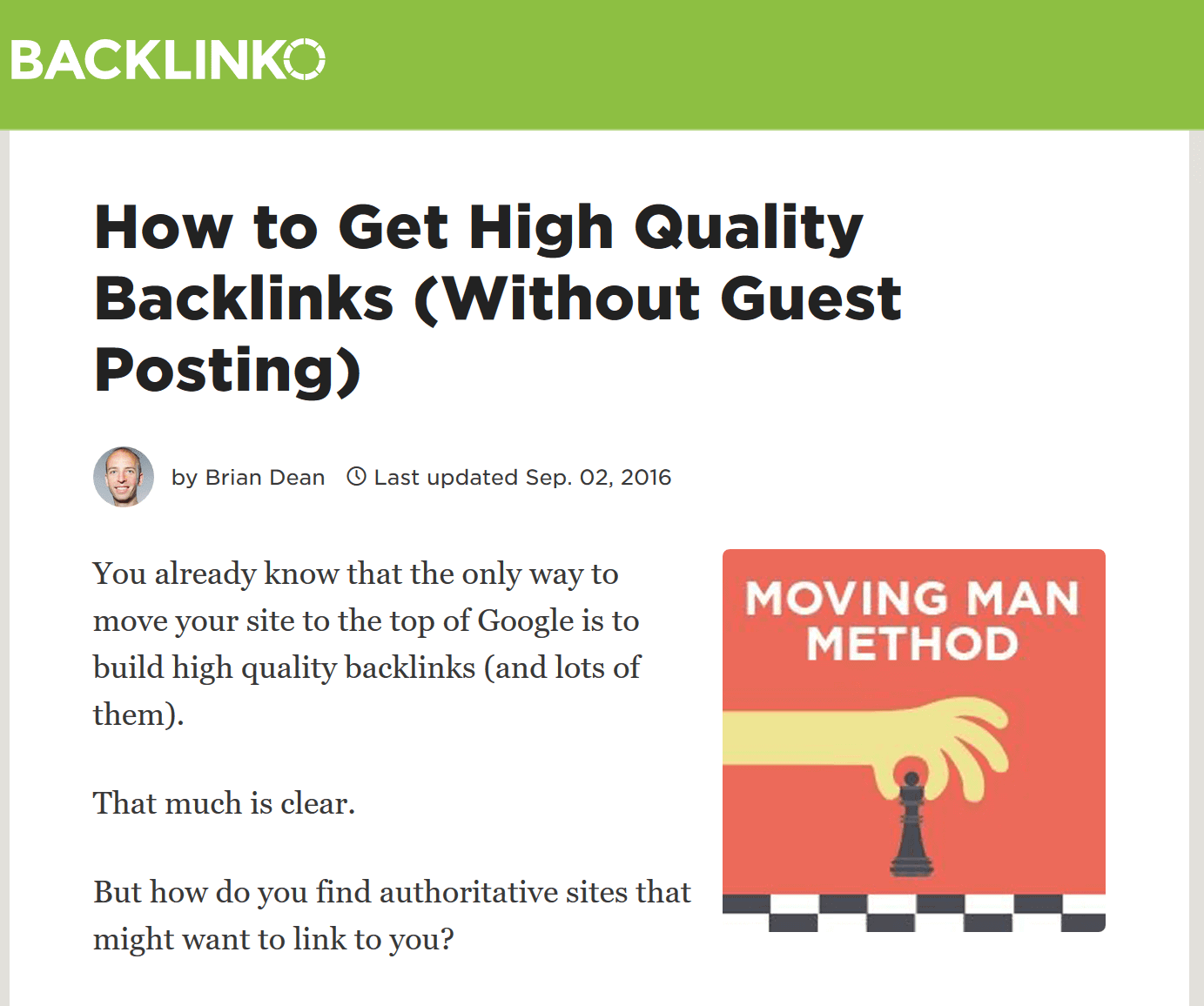
In this post, I didn’t just say: “Look at my new strategy. It probably works!”.
Instead, I showed people proof that The Moving Man Method works:
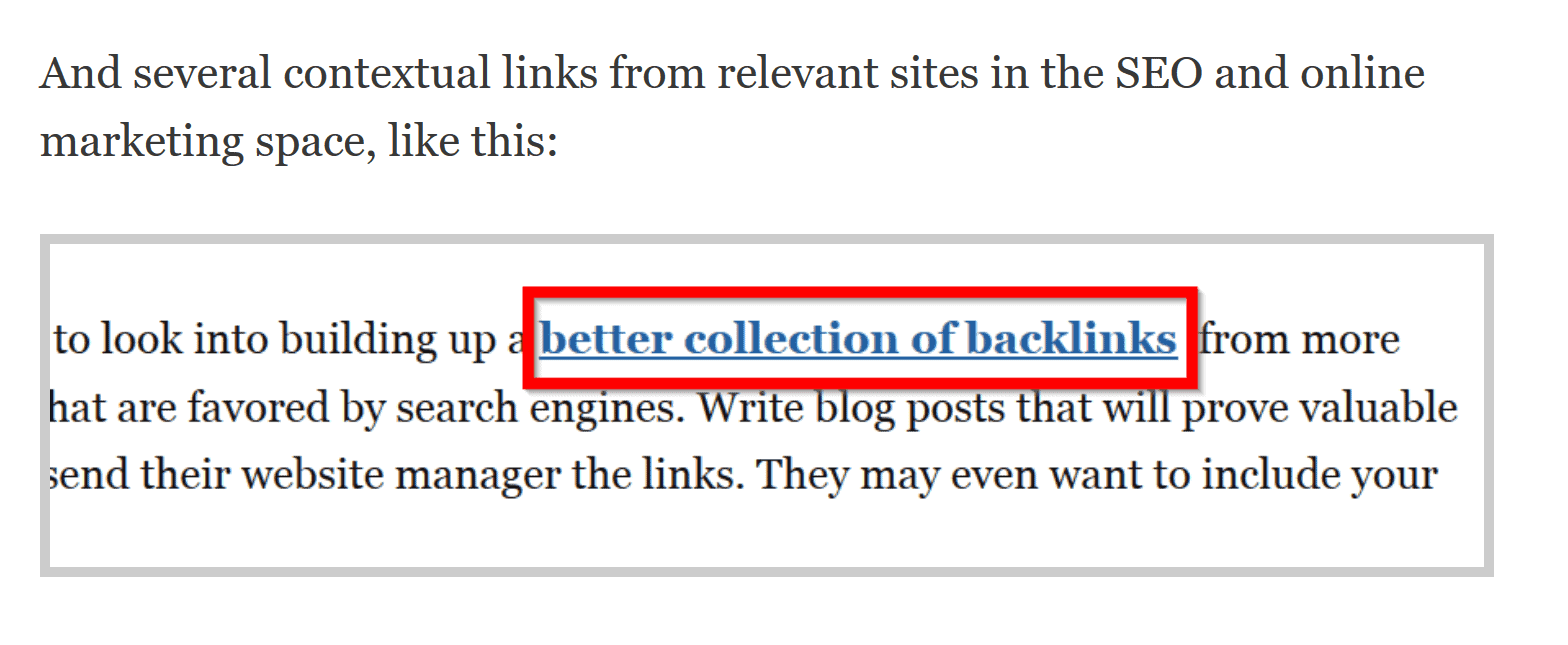
And that 1-2 punch (a branded strategy + proof) is an asset that can result in lots of backlinks.
Resource pages are a link builder’s dream.
Why? They’re pages that exist solely to link out to other sites.
Here’s an example:
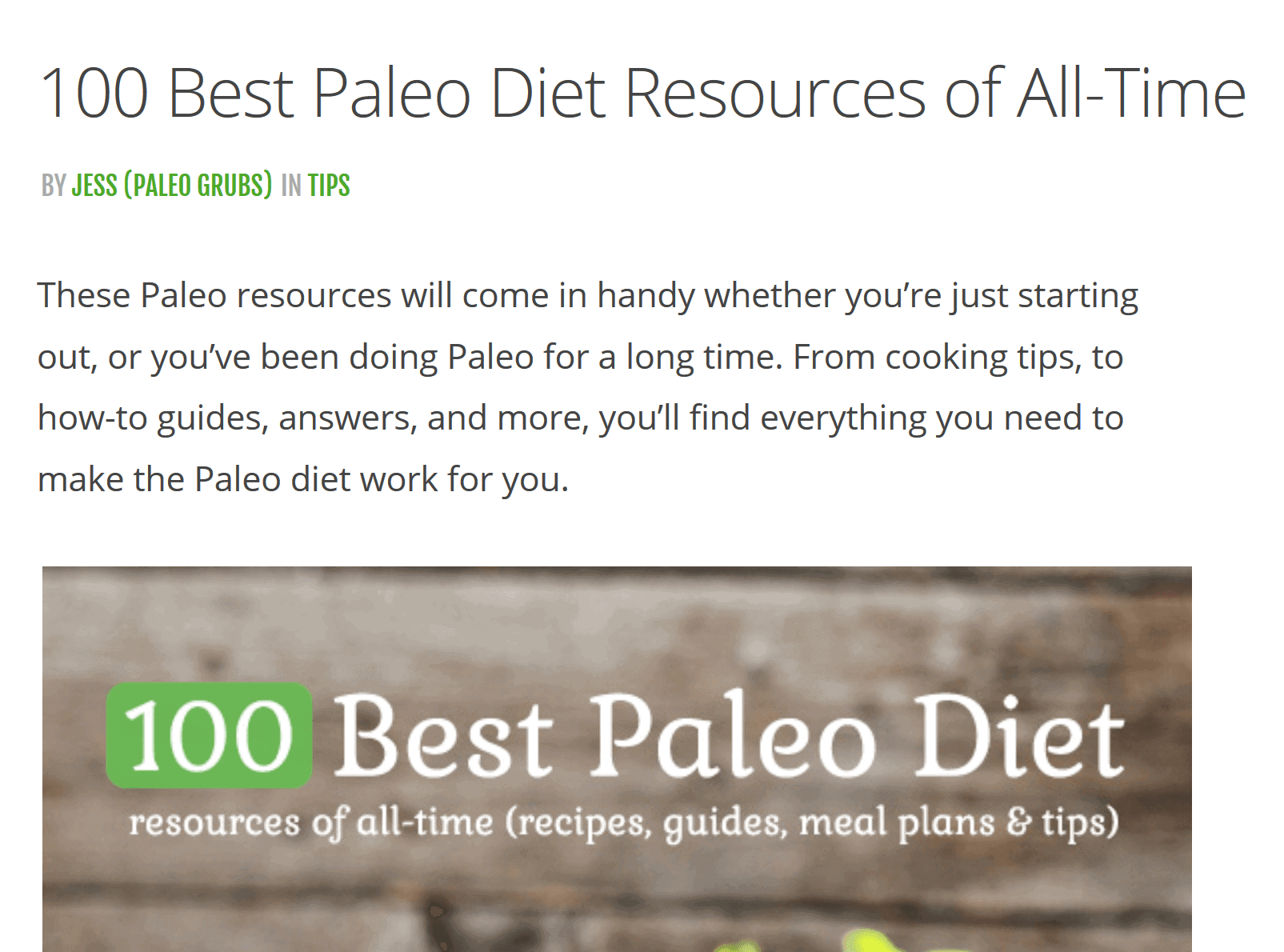
And here’s an example of a link that I built from a resource page a while ago:

You might be wondering
“OK, that’s great. But how can I get links from resource pages”?
Like every strategy in this post, I’ll walk you through the step-by-step process:
First, you need to find resource pages.
These can be tricky to find. Very few people call their resource page a “resource page”.
Instead, people tend to describe their pages with terms like:
“helpful resources”
“useful resources”
“further reading”
“additional resources”
So to find these pages, you just need to search for these terms… plus a keyword.
For example, let’s say you just published an article about link building.
Actually, we’ve published a detailed guide on how to easily ace backlink audits to help attract and build authority resource pages.
You’d do a Google search using this keyword:
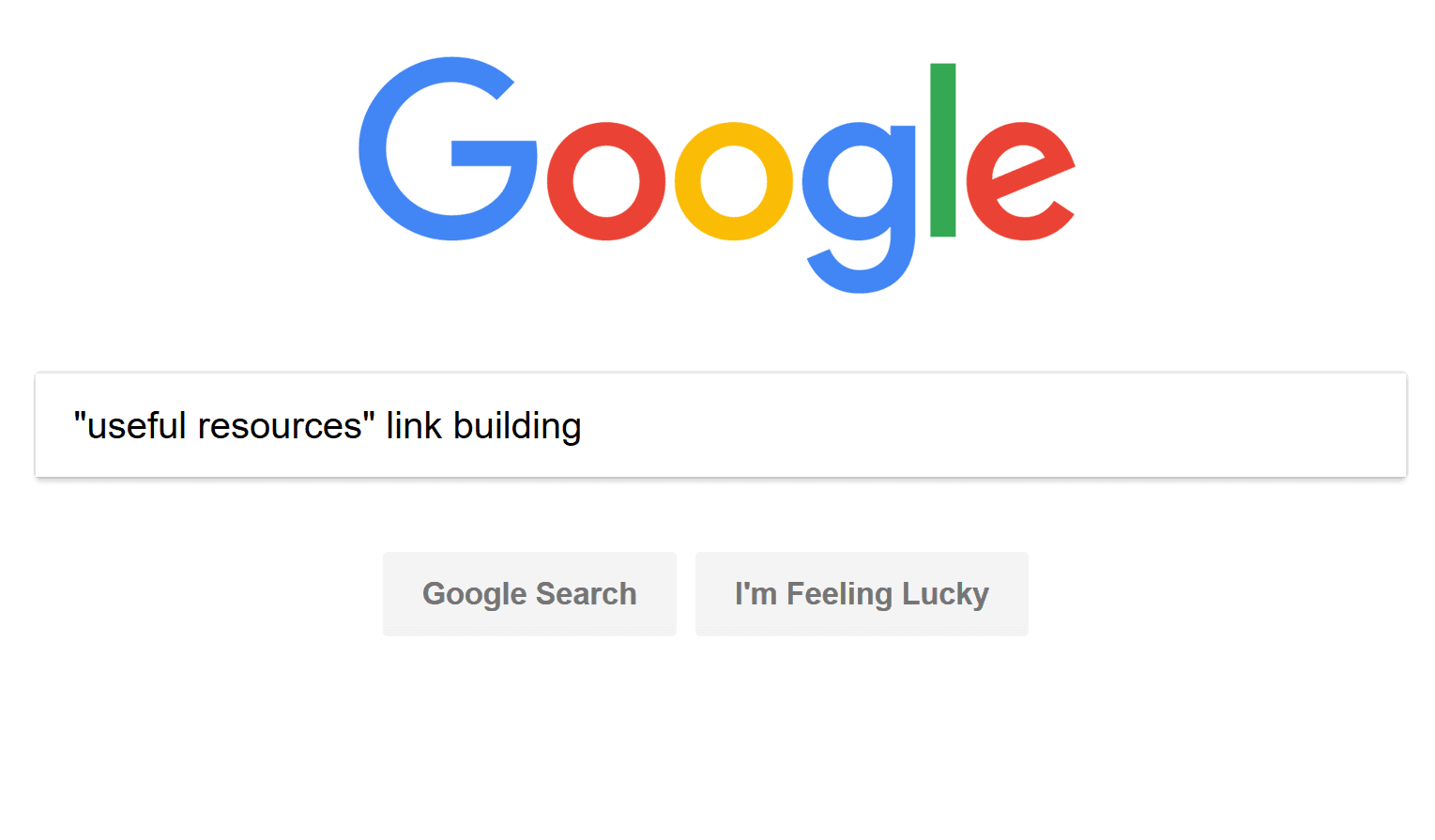
And within 5 seconds I found this massive list of link building resources:
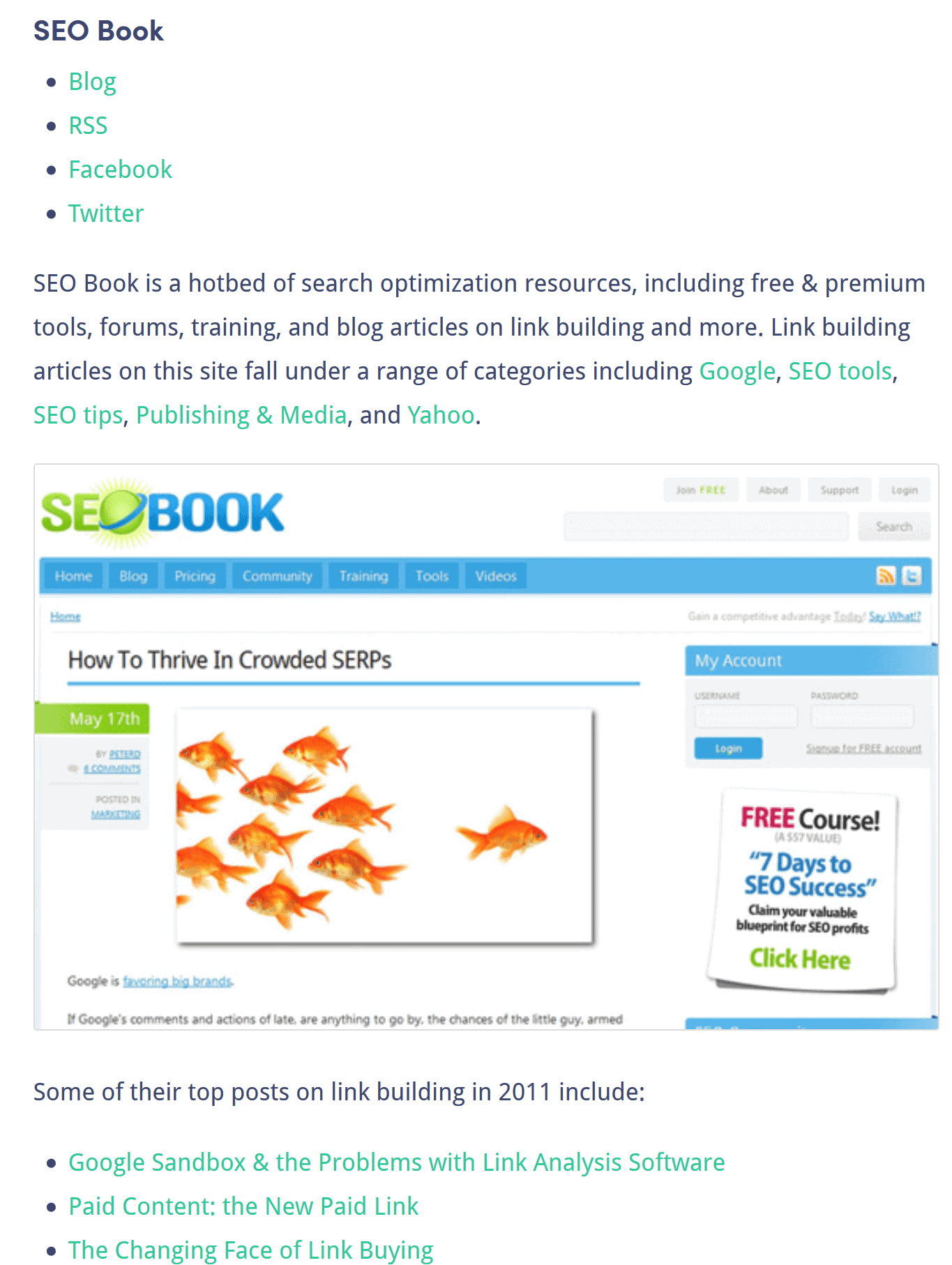
Second, now that you’ve found a resource page, it’s time to reach out and (nicely) ask for a link.
Here’s the email script that I recommend:
Hi [Name],
I was looking for some articles to read about [You Topic] today, when I stumbled on your [Resource Page Title].
Very cool.
Anyway, I noticed that you have a section on your resource page dedicated to [Your Topic]. I actually recently published a massive guide on that same topic. It might be worth adding to your page.
Thanks and have a great day!
Regards,
[Your First Name]
To be clear:
This script is just a starting point.
The more you personalize your outreach emails, the more links you’ll get.
But his proven script is a proven outline that you can start with.
Bonus Strategy #1: Turn Brand Mentions Into Quality Backlinks
Every once and a while someone will mention you in a blog post ..but won’t actually link to your site.
Here’s an example:

See how that person mentioned my site… but didn’t link to me?
That’s called an “Unlinked Brand Mention”.
These mentions are relatively easy to get backlinks from.
Why?
The author of the post already mentioned you. Which means they like you.
So you just need to send them this friendly email:
Hi [Name],
I just came across your latest article: [Article Title].
Awesome work!
I just wanted to reach out and say “Thanks” for mentioning [Your Brand Name] in your article. I really appreciate that.
Also, if you have a minute, it would be great if you could link to our site. That way, your readers can easily find the post on our blog that you mentioned.
Again, thank you for mentioning us in your article. And have a great day.
Best,
[Your First Name]
And you’re set.
Bonus Strategy #2: Send “Feeler” Emails
When it comes to email outreach, you have two options:
Option #1: Ask people for links in your first email
Option #2: Use a “feeler” email
From running hundreds of link building campaigns, I’ve found that both approaches can work.
But I’ve also found that so-called “Feeler” emails increase conversions by 40%+.
So: what are “Feeler” emails?
Feeler emails are messages you send to prospects without asking for a link.
(You’re “feeling out” whether or not they’re receptive to your outreach… before you make a link pitch.)
Here’s a real-life example:
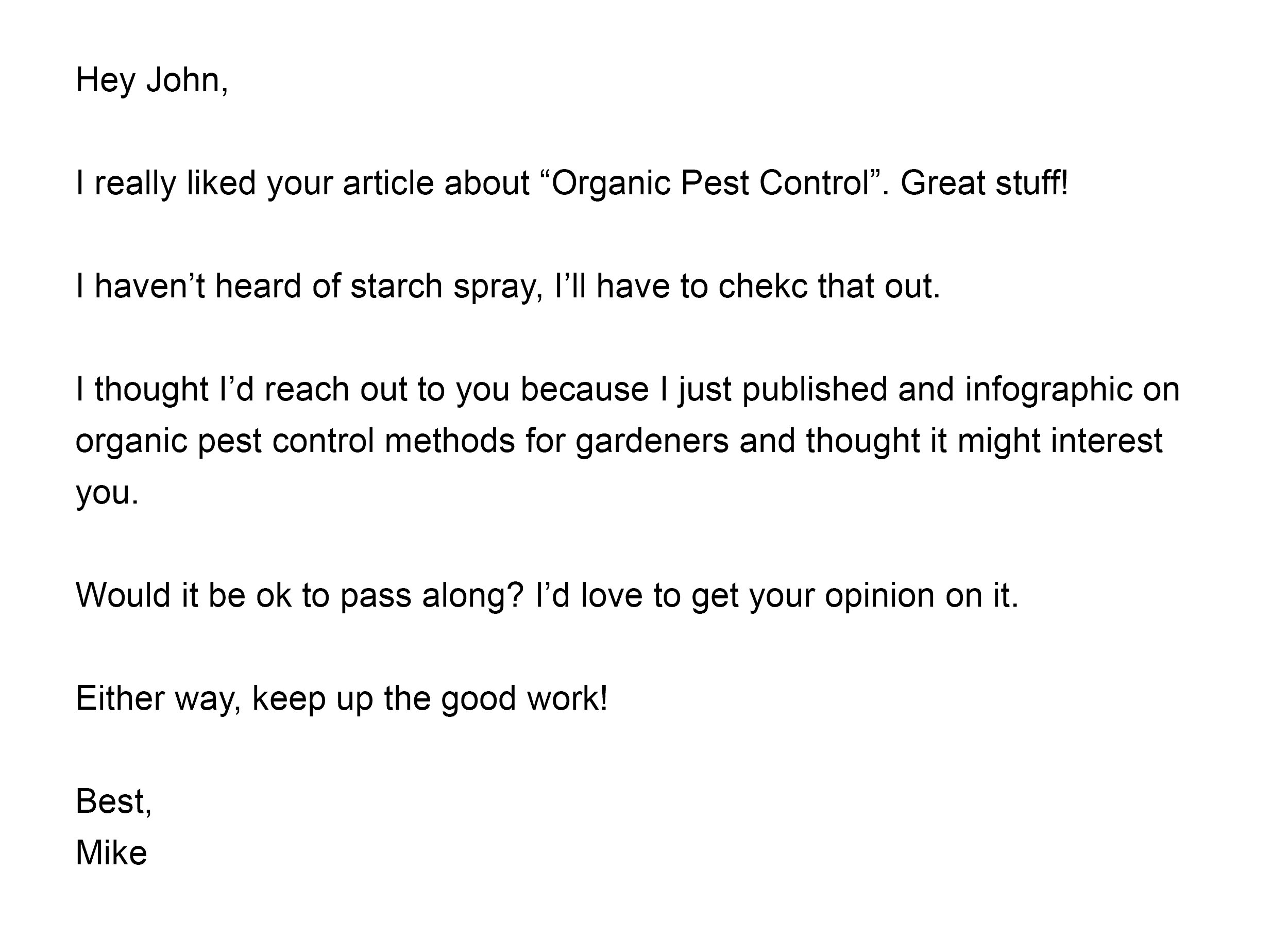
See how Mike doesn’t ask for a link? Instead, he asks the person if they’d like to see it first.
IF they say “yes”, you send them your pitch:
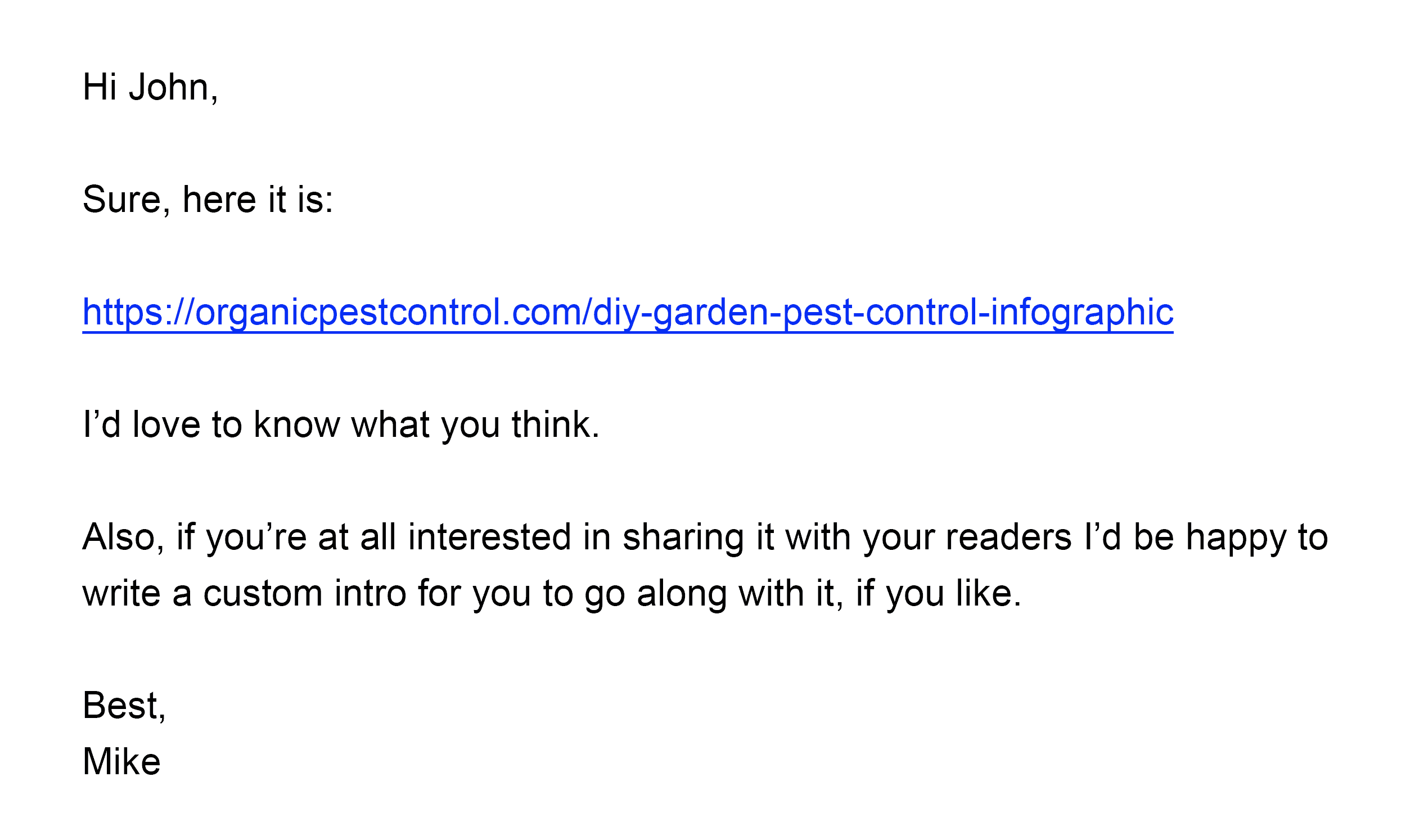
In Mike’s case, the “Feeler” email got 40% more responses vs. asking for a link in the first email.
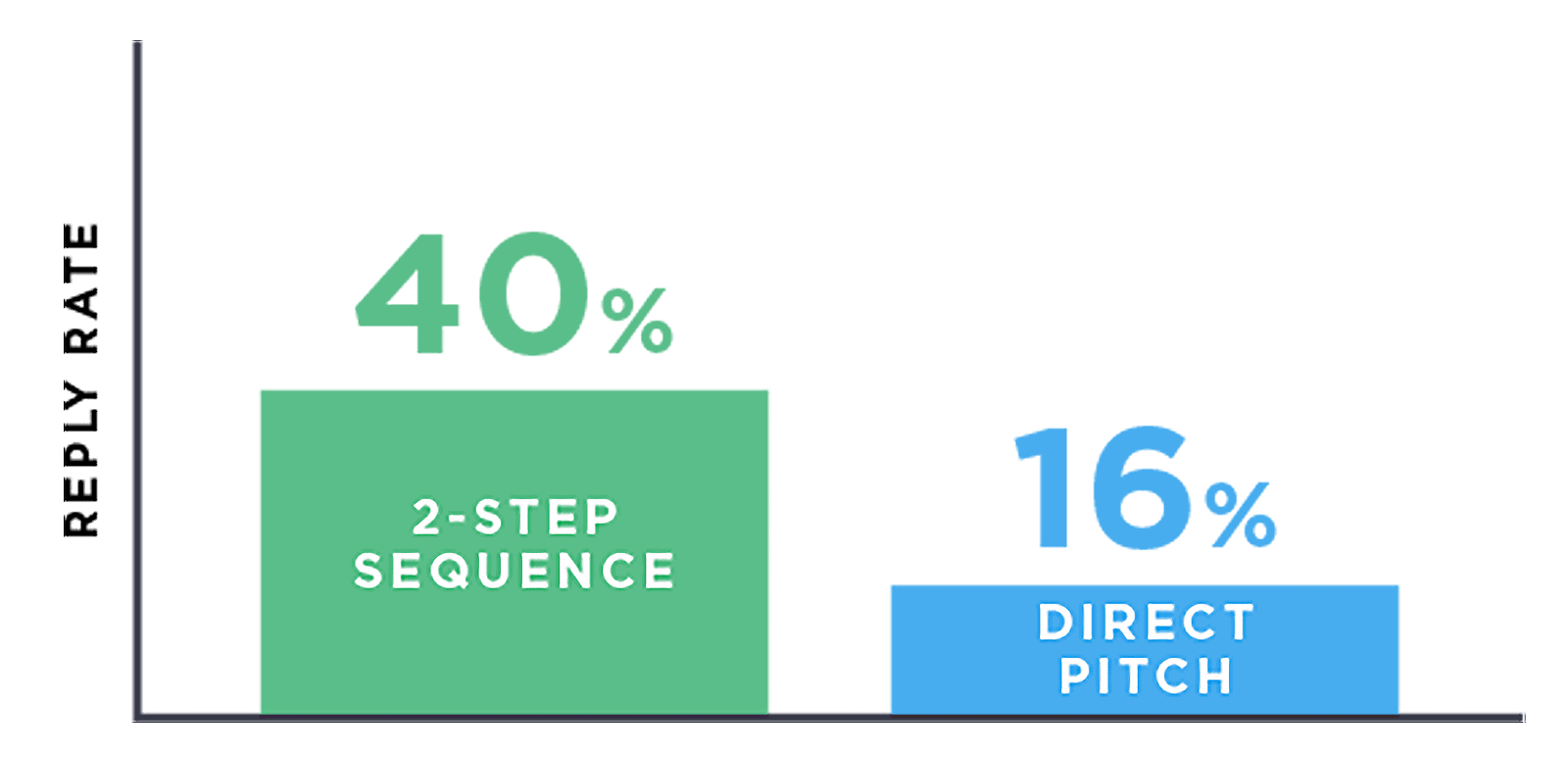
Very cool.
What Do You Think?
There you have it: seven proven ways to get backlinks in 2024.
Now I’d like to hear from you.
Which strategy from today’s post are you going to use first?
Are you excited to publish an Ultimate Guide?
Or maybe you want to test “Feeler” outreach emails.
Let me know by leaving a comment below right now.